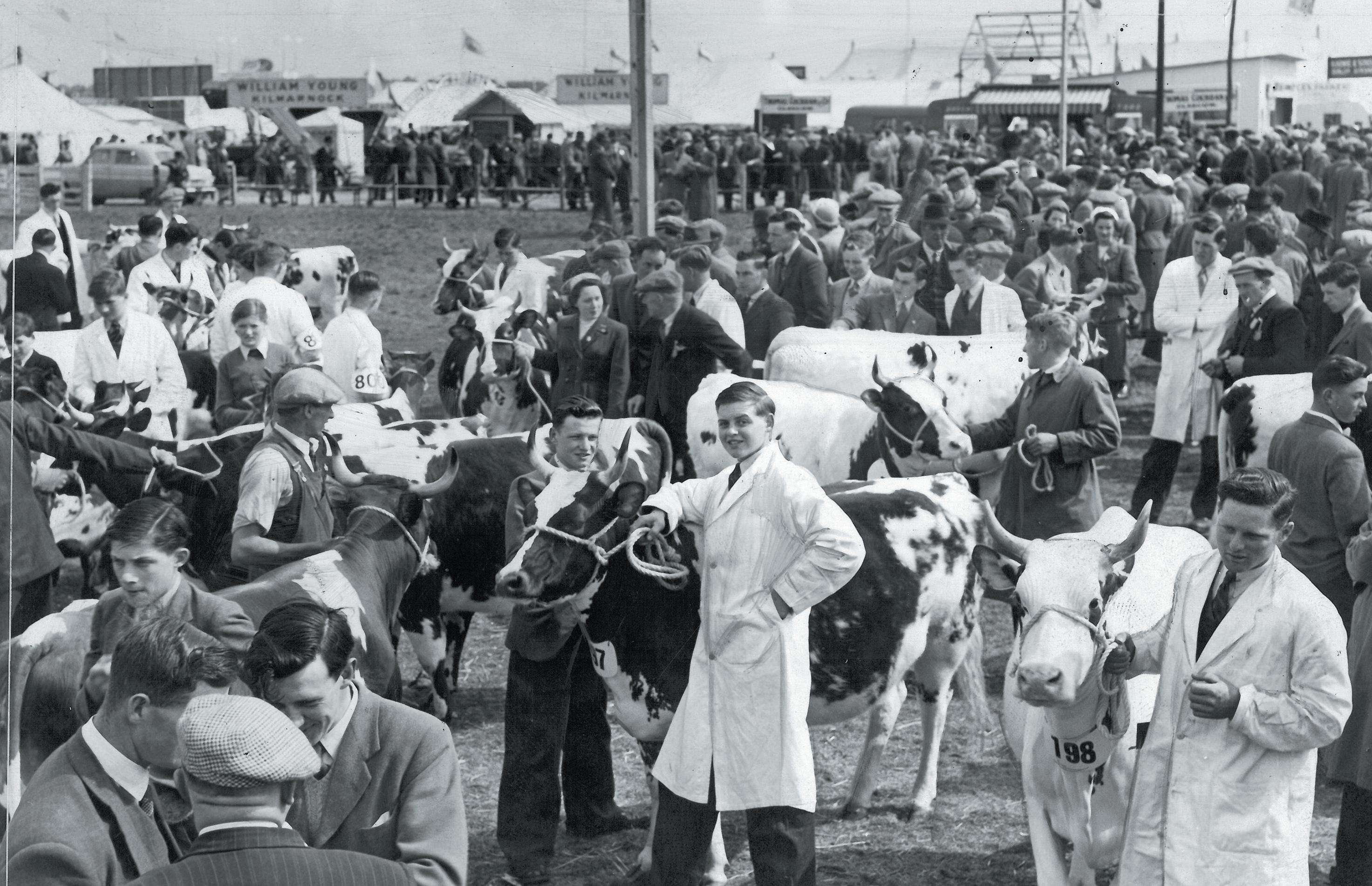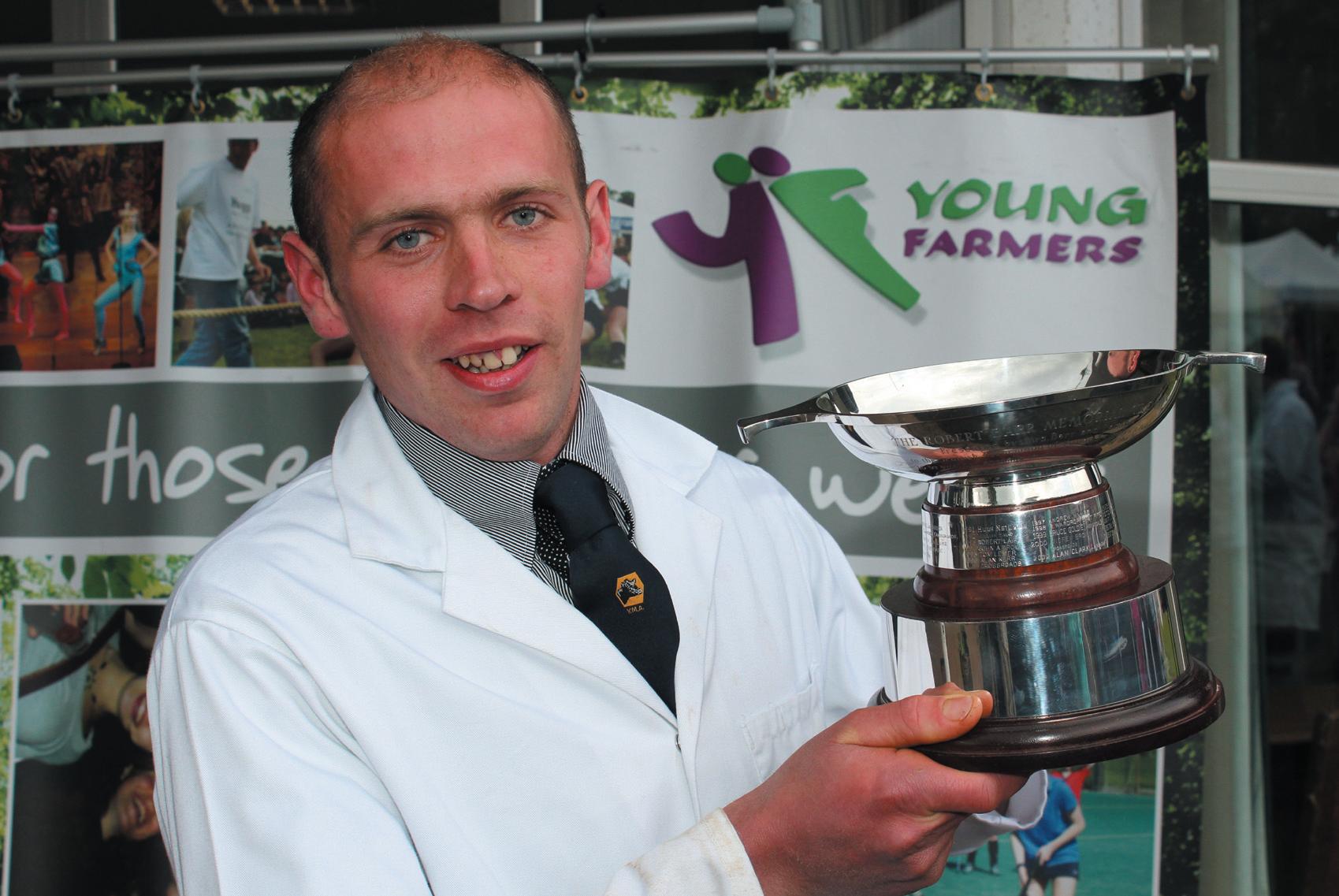

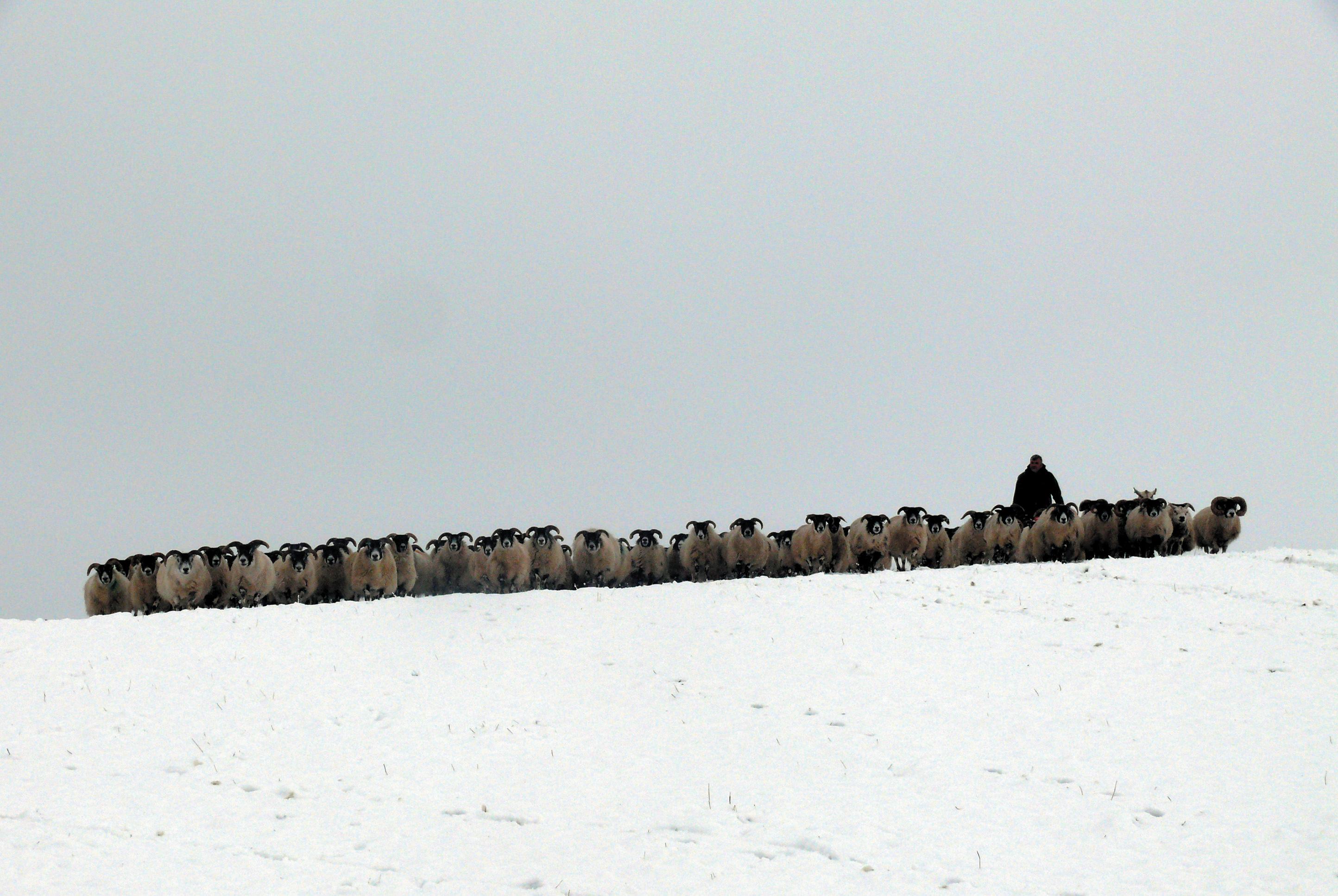


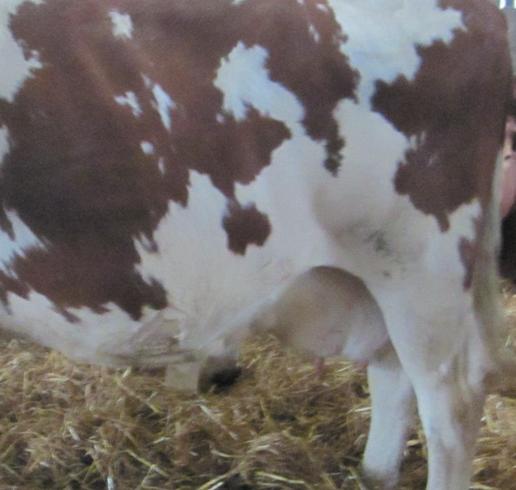








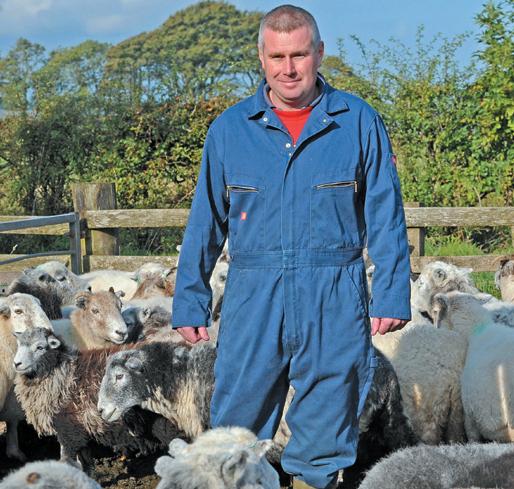


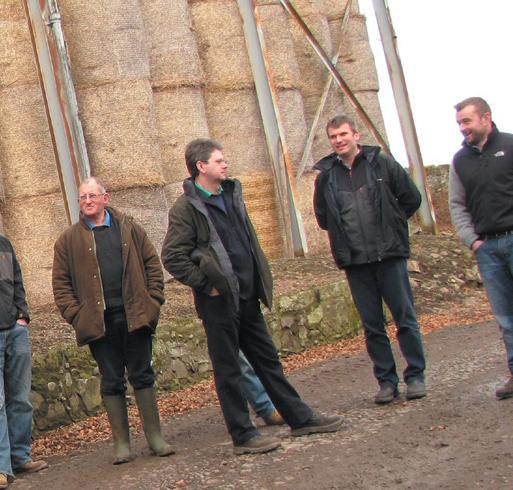



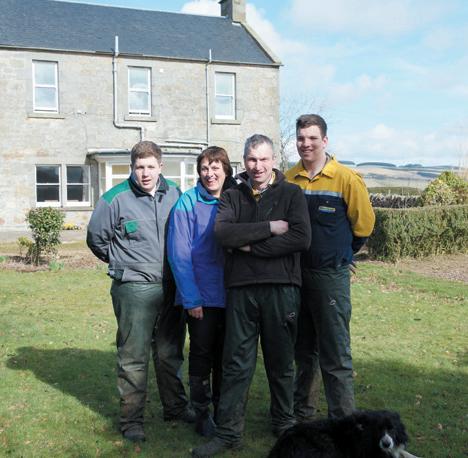

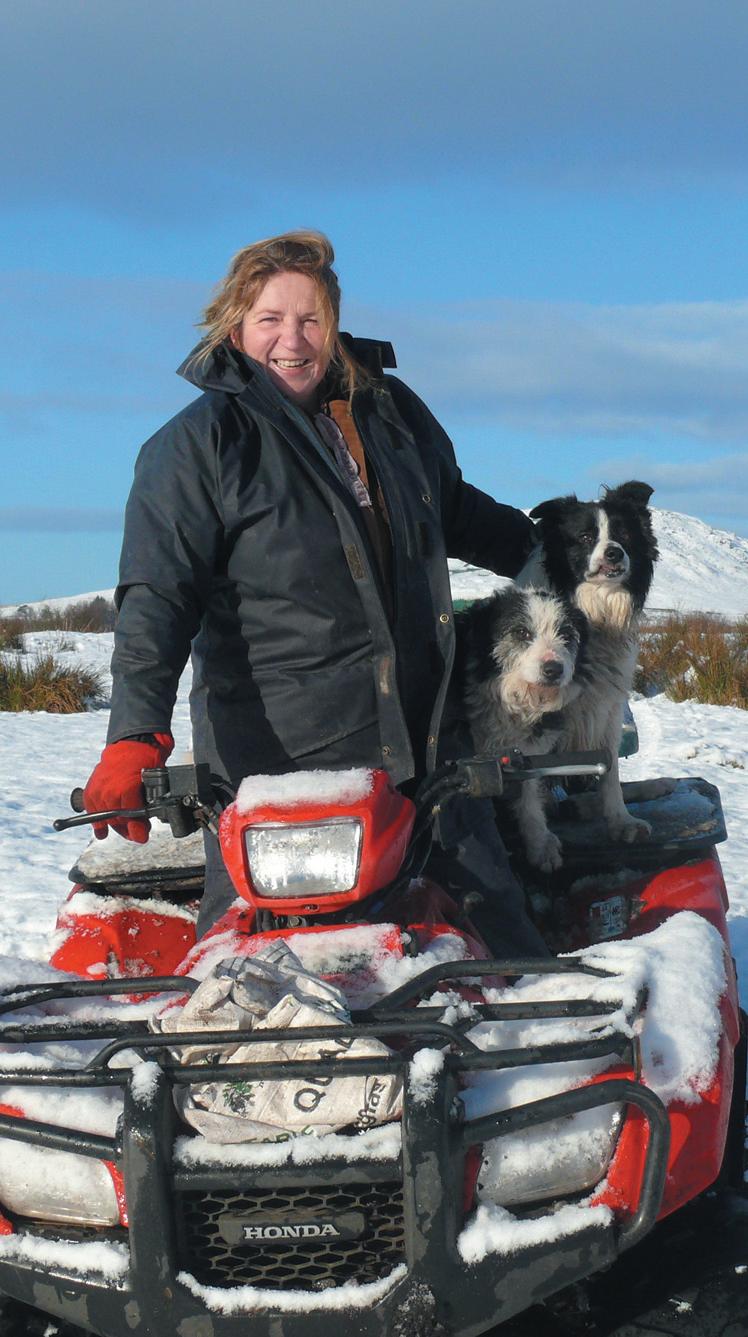
Lambing has definitely started as I have a lamb at the heater at my feet as I write! The lamb box heater has blown so I have an ovine companion in the office instead of a canine one this morning! Typically it is blizzard conditions outside, which will test any newborn for get up and go.
It’s been a busy month here at Marbrack with hoggs coming home from wintering, fencing and preparing for lambing. I’ve also had some good days out interviewing and some cultural ones too! The RHS premiered five short films at the Filmhouse in Edinburgh – a very enjoyable evening and it is worth checking out the films on YouTube.
A young lad with a big heart, aiming to raise funds for charity by shearing for 24 hours, is Grant Hurcomb of New Luce. I look forward to going along and supporting this event, as anyone who has shorn the normal 8 hour day will know that this is no mean feat!
Grant and his father, who both scan through the winter, mentioned that more and more Blackface gimmers are yeld – something that was also highlighted at the Blackie AGM. We will be looking into this for the May issue.
Eilidh MacPherson Marbrack Farm, Carsphairn, Castle Douglas, DG7 3TE
016444
016444 60644
Richard and I headed to Penrith to the Rhenged Centre to view Ian Lawson’s Herdwick Lakeland photographic exhibition. It is well worth the trip and runs till the 19th April. I’ve included a couple of shots from the display. His books are real high quality coffee table items. My only criticism is that some are maybe a tad over photo-shopped, making the colours very vibrant but slightly unrealistic.
We loved the one of a line of ‘breeked’ hoggs, clad with different patterned material!
Tom Paterson (80) (our cover) was presented with the Connachan Silver Salver at the meeting, for his contribution to the breed. I was unaware when I sent Kim Stretch out to photograph him at home that Tom had given Kim her first adult lambing job on Ancaster Estates, were she returned for five years!
Delighted to say the blast in front of the heater did the trick for the wee lamb yesterday and then likewise for a duo from a set of triplets. All are now back on their mothers sporting wee pink waterproof jackets! Glad we only have 40 AI ewes lambing in this filthy weather and hope the next few weeks are warm and sunny for the main mob.


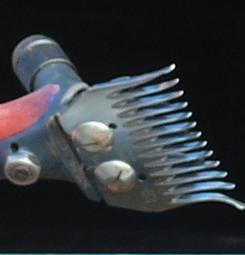
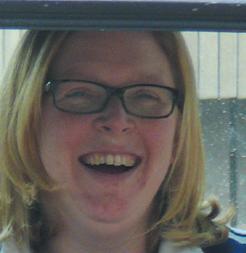


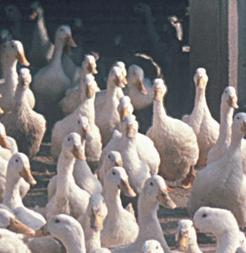




Research lead by a team from the University of Canterbury, New Zealand has found that commonly used herbicides, including the world’s most used herbicide Roundup, can cause bacteria to become resistant to antibiotics.
Herbicides are used to kill plants. They can be tested for killing bacteria, too, as part of the process of reviewing their approval for use.
However, they have never been tested for other effects on bacteria, University of Canterbury’s Professor Jack Heinemann says.
This is the first study of its kind in the world. While other substances such as aspirin have been shown to change bacteria’s tolerance to antibiotics herbicides have never been tested. The team at the University of Canterbury investigated what happens to species of disease-causing bacteria when they are exposed to common herbicides such as Roundup, Kamba and 2,4-D.
“We found that exposure to some very common herbicides can cause bacteria to change their response to antibiotics. They often become antibiotic resistant, but we also saw increased susceptibility or no effect. In most cases, we saw increased resistance even to important clinical antibiotics,” Professor Heinemann says.

“We were so surprised by what we were seeing. We wanted to be sure it wasn’t an artefact of conditions in our laboratory or some kind of contamination. So we enlisted a fellow researcher at Massey University in the North Island, who conducted the same experiments but without knowing what she was adding to the bacteria. She got the same results.”
The effects found are relevant wherever people or animals are exposed to herbicides at the range of concentrations achieved where they are applied. This may include, for example, farm animals and pollinators in rural areas and potentially children and pets in urban areas. The effects were detectable only at herbicide concentrations that were above currently allowed residue levels on food.
Antibiotic resistance is a serious and growing problem for human and animal health. New antibiotics are hard to find and can take decades to become available. Effects of chemicals such as herbicides could conflict with measures taken to slow the spread of antibiotic resistance.
The research team included researchers from Mexico, Lincoln University and Massey University.
At their first land sale of 2015, H&H Land & Property have demonstrated that land values are continuing to rise and that farmers are still keen to add to their holdings, and that land is definitely a place for investors to put their money. Selling a total of 102 acres the land averaged £10 941 an acre, well above the average guide prices. The highlight of the sale, which was held at Borderway Auction Mart, was 2.9 acres of land at Wetheral Shields selling for £14,675 an acre.
Matthew Bell of H&H Land and Property, said: “This was our first
auction of the season and the prices achieved demonstrates that the rural land sector continues to grow in confidence. The ring was packed, and there was keen competition by landowners and farmers looking to increase their holdings and others buying land for investment.”
At High Hesket 69 acres sold for £805,000 or £11,631 per acre, which was 41% more than the guide price of £570,000. Land near Abbeytown, 15.52 acres sold with a guide of £125k, went under the hammer at £135,000 which was £8,698 per acre.
At Houghton 7.81 acres sold for
Over 150 guests were invited to a private screening at the Filmhouse to preview a series of short films shot on location at the 2014 event by former BBC TV Series Producer and award winning film maker, Rob Bryce.
The five films focused on different aspects of the iconic show – food and drink, livestock, countryside, machinery and equestrian – which last year welcomed over 178 000 visitors and had an estimated economic impact of £47.1m.
Following the screening, David Jackson, Royal Highland Show Manager, unveiled this year's consumer campaign, 'It's Moo-Hoosive', featuring the Show's iconic Highland cow with enormous horns to represent the breadth and depth of this unique event and its wide appeal to urban and rural visitors alike.

£85,000 an average of £10,883 per acre.
Not only was the sale the first of the season, it was a first of a lifetime for Thomas Armstrong, Auctioneer and Land Agent, for H&H Land and Property. He was commissioned to sell his first block of land and was delighted when the land at Wetheral Shields went on to reach almost 75% more than the asking price.
H&H Land and Property currently have a number of parcels of land and farms to sell across the North of England and South West Scotland.
Aformer student from Malawi, who carried out research at SRUC’s Crichton Dairy Research and Innovation Centre, recently won a prize for an idea encouraging unemployed young Malawians into dairying.
Bettie Sindi Kawonga’s concept, of creating incubation centres to help young people become dairy entrepreneurs, won her a $150 000 prize from the Howard G Buffett Foundation, Tony Blair’s African Governance Initiative and the World Food Prize Foundation. They believe her idea addresses the two key problems of high youth unemployment and low agricultural productivity.
Bettie is now a lecturer in Dairy Science and Technology at Malawi’s Bunda College of Agriculture, part of Lilongwe University of Agriculture and Natural resources. However, while still a student in 2010 she was given the opportunity to complete her MSc research with Dr Mizeck Chagunda at Scotland’s Rural Colleges’ facility in Dumfries. Her MSc thesis was titled, ‘Development of a performance Monitoring Tool for Individual Cow Management in Smallholder Dairy farms of Central Malawi’.
During her period with SRUC Bettie was able to talk about dairy farming in Malawi with local primary school groups. She says that experience, coupled with the happy time working with other researchers, students and consultants at SRUC reinforced her passion for the dairy industry. After graduation she moved into an academic role where she could combine research outreach and consultancy.
“The business incubation idea for the Malawi Young Dairy Entrepreneurs project was modelled around research, leadership through mentorship and consultancy ideas formed during my time with SRUC,” remarks Bettie.
Under the scheme six incubation centres will be established in central, northern and southern Malawi. It has a target of involving 240 young people (40 per centre) but hopes to double the numbers in five to seven years.
“Dairy farming provides an all year income, while crop farming is seasonal and vulnerable to problems like drought or flood,” says Bettie. “In addition to the economic advantages are the nutritional ones.” Bettie’s MSc studentship and research project were funded through the Scottish Government International Development fund. She is currently pursuing a PhD at the University of Kentucky in the USA.
Alyn Smith MEP and Emma Harper, SNP candidate for Dumfriesshire, Clydesdale and Tweedale, have expressed their support for Whitmuir Farm’s plan to establish itself as the first communityowned farm in Scotland.
Alyn said: “Whitmuir is a truly inspirational example of sustainable organic farming and I have to say that Pete Ritchie and Heather Anderson do a fantastic job running the place.
“Scotland’s got a good story to tell when we talk about high-quality food, and consumers knowing that they’re getting fresh, organic produce is a significant part of that.
“The farming sector has to evolve. Just look at farmers forming Producer Organisations and Commissioner Hogan making CAP simplification a priority for 2015.
“That’s why Whitmuir’s expansion programme is definitely one to watch, and they have my wholehearted support.”
Emma added: “As a Nurse Educator I was especially impressed by the focus on education at Whitmuir, in that both visitors and the local community can reconnect directly with farming and food production.”
Heather Anderson added: “Pete and I have always been passionate advocates of community engagement and education. We have 80 000 visitors to the farm every year and the farm has hosted 355 specifically educational events over the last five years.
“Whitmuir aims to become the first community-owned farm in Scotland and anyone aged five or over can buy a share from the Whitmuir Community Benefit Society for £50.
“From April 2015, with support from the Climate Challenge Fund, the farm will be working with two local schools to grow vegetables for the school. Every person on the planet has 2000m2 of arable land and 4000m2 of pasture, so the site will demonstrate the land use decisions we can make in Scotland and like with similar project round the world.”

Coca-Cola has now joined the dairy market, Danone and Nestlé’s consumers are demanding complete traceability and farmers are entering the infant formula and home milk delivery markets. These dairy industry ventures and many more will be explored during Dairy: Today’s Greatest Business Opportunity at Alltech REBELation, May 17-20 in Lexington, Kentucky, USA.
“The glass is definitely half full and even overflowing in some areas for the dairy industry to grow both globally and through local niche markets,” said Dan Weiland, Alltech Wisconsin regional sales manager and chairperson of the dairy symposium, part of Alltech REBELation. “In addition to new branding and marketing opportunities, we will discuss daily farm issues such as hiring the right people, passing on the farm to the next generation and being a good neighbour.”
Dairy: Today’s Greatest Business Opportunity will feature key industry leaders such as Jud Heinrichs, Penn State University and Mike Hutjens, University of Illinois. Dairy symposium topics will include:
•Cows: Four-legged machines that can smell up to six miles away:
•Model the Fair Oaks experience, be a good neighbour and open up your farm to tours.
• Milk: A delivery system for health and wellness: What does Coke’s bet on milk say about the “war on sugar” and their idea of dairy’s future? How does that compare to the way Danone, Kerry Foods and Nestlé are building a business globally?
They started with only a supply of milk and a plan.
•A New Profit Center for Dairy Farmers: Tying into the grid with methane.
• Cow Signals: Understanding the needs of the cow in terms of housing, nutrition and care.
• The Dairy Industry – Adding value while avoiding crisis: From casein to lactoferrinproteins and fats for anti-aging to sports drinks – building value while avoiding crisis.
• Auditing your Dairy: What’s your carbon footprint? Do you audit for efficiencies routinely? Can we harness this wasted power to become energy independent?
• Wisconsin Blueprint –Dairy capital of the world: Caring for your greatest asset.
• Nestlé Dairy Farm Institute: A Harvard case study.
• DHA Milk: The Horizon Example - A world of opportunity with DHA.
This special symposium is part of Alltech REBELation, an event exploring innovation, inspiration and world-changing ideas in Lexington, Ky., USA, from May 1720. Dairy: Today’s Greatest Business Opportunity begins on May 18. Preconference events include an opportunity to savor the best in brews from across the Bluegrass and around the world at the second annual Alltech Craft Brews and Food Fest on May 16, and tours of Kentucky’s horse farms, bourbon distilleries and other sites are offered on Sunday, May 17, along with an international welcome dinner for all conference attendees.
The NBA carried out a survey within its members to ascertain their feelings and concerns towards whole life assurance. 523 respondents from throughout England gave their views to a series of 12 questions.
1. 93.8% of respondents kept beef, 54.4% were sheep keepers and 9.75% had dairy enterprises.
2. Those answering the survey 73.7% were predominately already farm assured, who may show a predominance of finishers and only 21.4% said they would never join an assurance scheme.
3. 89% believe that the present statutory legislation they work under from both the EU and UK legislatures gives consumers all the assurance that they need and 87.45% believe that the inspections already carried out by RPA, Trading Standards Officers etc. are fully comprehensive.
4. Of those responding, 76% do not believe that it is necessary for an animal to spend its life on an assured holding to ensure high standards of welfare and traceability are accomplished.
5. When asked their view on the need for cattle to reside on a farm assured holding for their whole life to be assured, 72% were against it with only 23% for whole life assurance.
6. When those already farm assured were asked if they felt properly consulted by Red Tractor regarding the additional standards imposed in October 2014 an overwhelming 80% felt they had not been properly consulted.
7. 89% of those who filled in the survey believe that there should be more communication to retailers and consumers of the strict standards producers already adhere to.
Commenting on the results of the Survey Chris Mallon Chief Executive of the NBA said:“The results of this Survey show that beef farmers who are assured are satisfied with the regulations currently in place and that the proposed new whole life assurance is unnecessary and will not improve the Beef Supply Chain.”
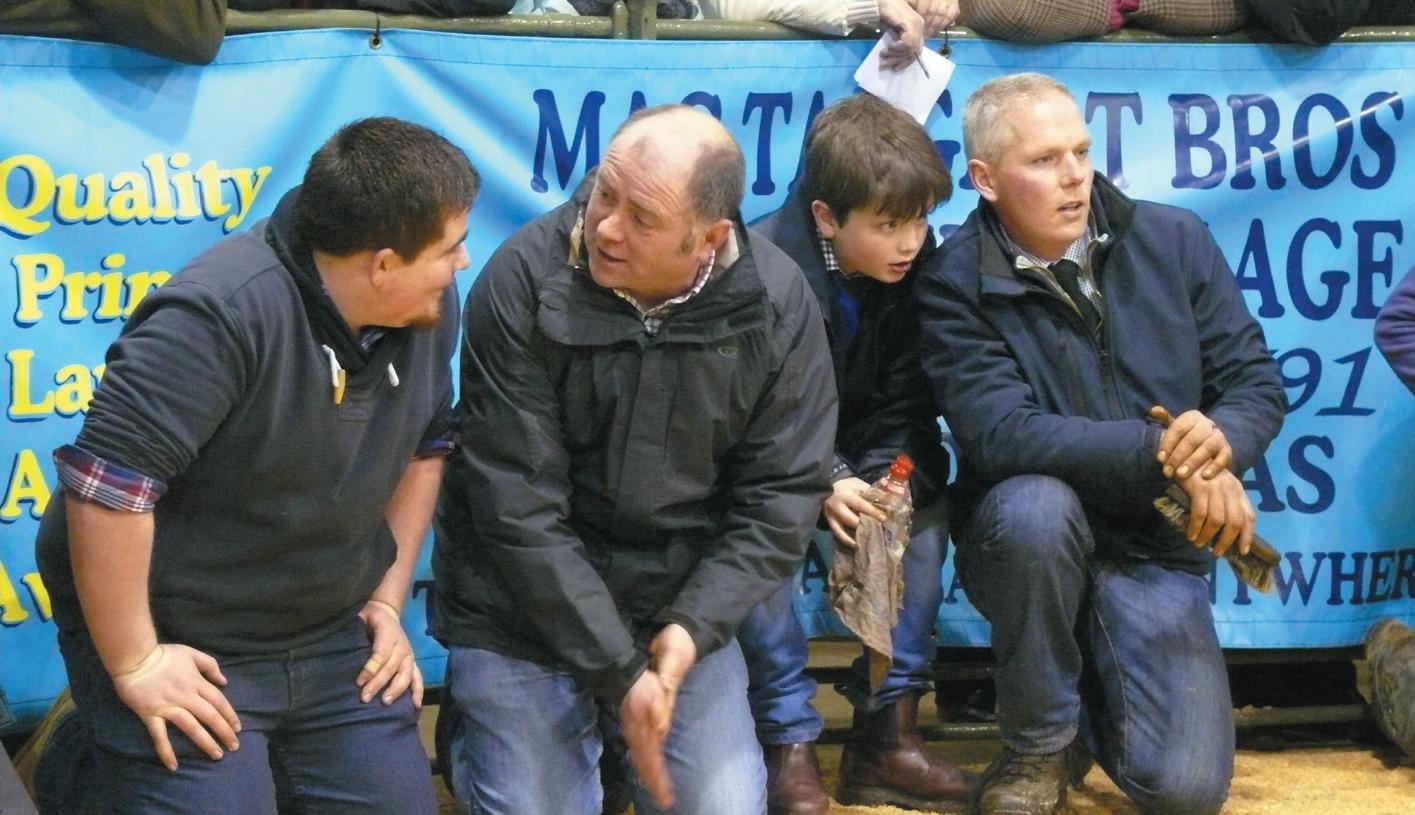
Blackface
In-lamb Sale
Lanark & SW Spring Show





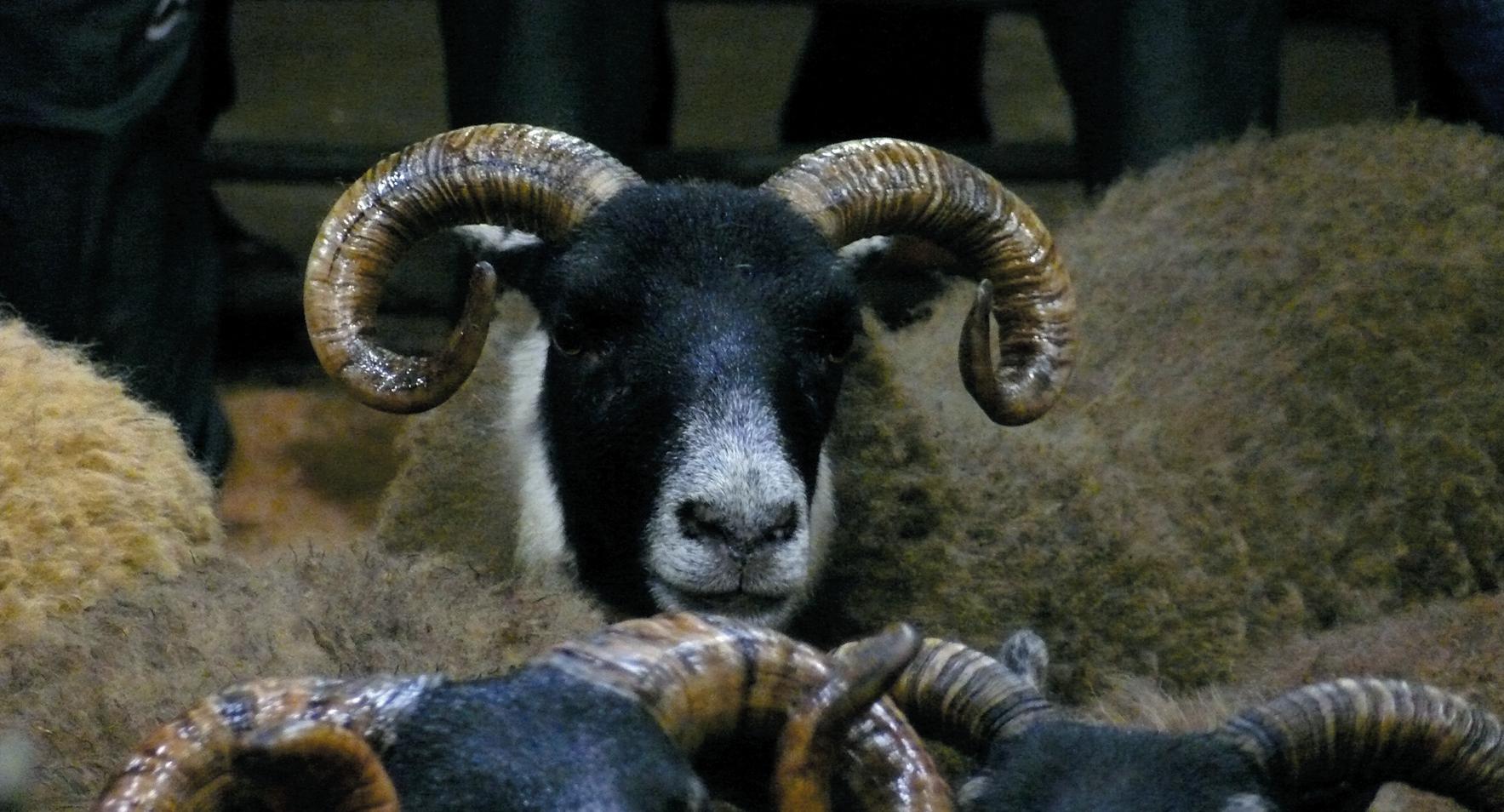

Thomas Mitchell Paterson was born at Douglas, Lanarkshire. His father worked as shepherd. He had one older brother Ian and two sisters Rita and Jean.
From Gateside, his father flitted the family to a new job at the bottom of Glencoe. He started school at Ballachullish, Lochaber.
The family stayed at Glencoe for two years then moved to Renfrewshire.
In 1945, his father became manager of the Garrows Farm in Glen Quaich, Perthshire.
From here the family moved to Ballinloan, near Dunkeld, Perthshire, to work for the Brugess family. Tom did his first lambing here at the age of 12.Sadly he lost his mother at the age of 14.
In 1950 the Brugess family decided to give up the farm, which meant another move for the Paterson family. His father got a new job and he started to work as shepherd at Drimsynie Beg Farm, Lochgoilhead, Argyll. It was at the top of these hills Tom had his first encounter with John Campbell, Glenrath.
Tom got a new shepherding job at Cornilees, Greenock with the Baird family. He stayed here for 4 and a half happy years but dec ided to move on.
He went to Glenmoy and worked for Donald McIntyre for 4 years.
Tom became shepherd for Col. Dewhurst at Dungarthill, Dunkeld. He worked here for 13 years and brought out many good breeding North type shearlings. He also won many trophies for Dungarthill at shows. It was here that he brought up his first family Tommy, Jenny, Fiona and Hugh.
From Dungarthill he took up the tenancy of Craigneich, Comrie in 1972 from Drummond Estate. He started to breed shearlings and show in his own name. He acquired the tenancy of the Straid Farm next door and also Dunruchan Farm in 1979. He started the Dunruchan flock off by buying some of the cast ewes at Lanark from Troloss, Burncastle, Gosland, Kingledores and Whelphill.
He also took on the job of farm manager for the estate too and farmed 24 farms under Ancaster Estates, which he managed for 14 years. When Tom retired from the estate, he was given a tenancy for Middleton Farm as a thank you.
He stills runs these 4 farms today with his wife Myra and son Robert. They carry 1700 Blackface ewes and 50 cows, breeding both the North and South type Blackface, bringing out 50 shearlings. He has always been keen on the Blackies and started when he was a boy under his father’s eye. Discussing the points of a good sheep with his brother lead to many a good argument. Tom enjoyed the challenge of building up the stock at Dungarthill and was delighted when he won both the Blackface champion and reserve champion at the RHASS for Dungarthill in 1965 and won the Caldows Cup for the best group outright as well.
Tom won the RHASS Blackface Champion in his own name for Craigneich and has been reserve twice. He won the Caldows trophy outr ight and presented the Tom Paterson Cup in it’s place. He was delighted to win this trophy last year .
Showing and judging has been big part of his life. He has won numerous championships in both the south and north sheep. He enjoys judging and has judged the RHASS, the Royal Yorkshire, Dublin, Balmoral, the Isle of Man, and the mountain breeds at Smithfield. When younger he learned to shear using the Bowen machine method and won 1st for both the hand shears and the machine at the RHASS. Tom was honoured in 2010 when John McPherson presented him with a crystal decanter and glasses for his involvement with Blackfa ce sheep at the RHASS for 50 years.
Another favourite memory is selling a North shearling, ‘Tango’ for £12000 to Auchnacloich, Amulree.
He has been vice chair for the local NFU branch and represented hill farmers. He was District 8 chairman and went on to be vice chair for the Association but due to ill health decided it was best to stand down.
He still tries to do his best for the breed by being an active member and attends the local district 8 meetings, stockjudgings, Perth Ram Society and judging and showing at many shows in both Scotland and Northern Ireland.
Tom is never scared to give his opinion to anybody and he enjoys the challenge of a debate.
Tom Paterson is the first person from Perthshire to receive this award. He has been nominated for this award 6 times previously!



AScottish shearer who settled in New Zealand to farm in Taranaki has become the first non-Kiwi shearer to win the Golden Shears Open Shearing Championship.
Gavin Mutch, the 36-year-old won the title on the same stage in Masterton where he won the World Championships final in 2012, bringing fame both to Huntly in Aberdeenshire and New Zealand’s Forgotten Highway hamlet of Whangamomona.
Wife Pip and their children watched the internet livestreaming from home in Taranaki while others were watching the history-making 55th Golden Shears Open finalist over breakfast about 20 000km away.
The win ushered in a new era of open shearers after legendary Te Kuiti shearer David Fagan was eliminated in the semi-finals, in what was to have been a bid for a 17th and final Golden Shears Open title before retiring next month.
Mutch said Fagan had stopped a lot other great shearers from achieving the ultimate goal in World shearing, and he was glad to have won before the 53-year-old Fagan retired.
The 2010 winner, Cam Ferguson, of Waipawa, was also ousted in the
semi-finals, leaving a unique field comprising of just one former winner, Hastings shearer Dion King, and including three newcomers.
It was the first time since 2002 that there had not been at least two former winners, and the number of first-time Golden Shears Open finalists in the six-man field was the most since 1983.
Amazingly, the six finalists had won just four competitions between them this season, Mutch winning two of them.
After the elimination of Fagan and Ferguson, the winners of 18 finals between them this season, the pace in the final was expected to be a battle between Mutch and King and possibly the unheralded 30-year-old Pyper, who ultimately was a serious hopeful of being the first South Island shearer to win the title since 1989.
The lead see-sawed mainly between King and Pyper, on stands one and two, King ultimately claiming the ascendancy to finish in 17min 36.835sec, almost losing his last sheep over the front side of the board instead of through the poirthole.
He beat Pyper by 10 seconds, Mutch by 20 and fast-finishing
surprise packet Aaron Haynes, of Feilding, who finished in 18min 4.407sec.
Few in a crowd of well over 1600 were prepared to pick the ultimate outcome while judges calculated pen quality points and ultimately Mutch, scoring well in quality points but still not the best, had done enough to win by just 0.596pts from Haynes.
Southland shearer Nathan Stratford had his best result in six Golden Shears Open finals by finishing third and claiming the honours for best quality points.
King, the 2006 winner and in the final for a 9th time, was 4th, followed by first-time finalists Murray Henderson, of Feilding, and Pyper.
Mutch first reached the Golden Shears Open final in 2005 and tonight’s was his 6th, the best previous results having been two 4th placings.
In other major events on the final night, Australia scored a fourth consecutive Transtasman shearing test win over New Zealand, and edged in front at 29-28 in the number of tests won in matches between the two countries since the Transtasman series began in 1974-75.
Rakaia shearer Tony Coster returned to No 1 as New Zealand’s top all-wools shearer by winning the PGG Wrightson National Circuit final, having won three times consecutively from 2009 to 2011, while 23-year-old Joel Henare, of Gisborne, won his third consecutive Golden Shears Open woolhandling title.
The end of the night was chocked with emotion, as Fagan was honoured on stage to a standing ovation marking the end of a Golden Shears career spanning 35 years.
He then presented the trophies to the new kilted champion, who in an ironic twist wins a place in the New Zealand team to shear against Australia next season!
This time, tears of emotion welled as the National Anthem of Scotland was played to honour his success at a championships where the first and last of more than titles went to Scotland.
On Thursday Lanarkshire lassie Claire Wilson’s novice Woolhandling win was Scotland’s first New Zealand Golden Shears title since senior shearer Doug Lambie’s win in 1990.



Lanarksire lassie Claire Wilson thought she was just making up the numbers when she entered the novice woolhandling competition on the first day of the 55th Golden Shears in Masterton.
But not only did she reach a final for the first time in New Zealand, the 21-year-old Scotswoman won –possibly to the chagrin of older brother Scott who has reached 12 senior shearing finals in New Zealand this summer and is still waiting for his first win.
One of 18 who took part in the heats of the first of the 22 events to be decided over the three days of the World’s greatest shearing and woolhandling championships she said after receiving her winner’s red ribbon from Minister of Primary Industries Nathan Guy: “I didn’t think I would even reach the semi-final.”
Asked for the secret behind her sudden success, she said: “I don’t even know. I can’t believe it, this is such a dream.”
From Biggar, in South Lanarkshire and about 50km southwest of Edinburgh, she has been woolhandling about 12 months, working mainly for her 23-year-old brother, who shears in the at senior level.
She came to New Zealand at the end of November, having already worked in Scotland and Norway, and got a job with Wairarapa contractor Greg Herrick.
Therein perhaps the secret. He’s a former Golden Shears Open shearing finalist and Golden Shears Championships Society President and
the current president of the Golden Shears World Council.
Claire also topped the heats and the semi-finals en route to victory.
At that juncture in the 2015 Golden Shears event, Claire was only the second person from Scotland to win a Golden Shears International championships title in shearing or woolhandling, after 1990 senior winner Doug Lambie.
Scotland has, however, had two other big wins in Masterton – the
Result of the Golden Shears Novice woolhandling final:
Claire Wilson (Scotland) 99.6pts, 1; Chynna Haney (Eketahuna) 102pts, 2; Bianca Hawea (Masterton) 109pts, 3; Hazel Wood (Ruawai) 136pts, 4.
Gavin Mutch completed a BTech in Agriculture before taking up a shearing career and Claire just finished an HND at Oatridge


Results from the 55th Golden Shears International: Shearing:
Lister Shearing Transtasman Shearing Test (6 merinos, 3 long wool, 3 second-shear): Australia (Shannon Warnest 17min 27.593sec, 79.38pts; Daniel McIntyre 17min 10.33sec, 87.017pts; Damien Boyle 18min 43.973sec, 94.382pts) 260.679pts, beat New Zealand (Nathan Stratford 17min 57.002sec, 87.8pts; Colin O’Neill 17min 41.777sec, 96.255pts; David Buick 18min 26.46sec, 97.99pts) 281.845pts. Elders Primary Wool Transtasman Wool Handling Test (four merino fleeces, four lambs): Australia (Sarah Moran, Tara Smith) 400.022pts, beat New Zealand (Ronnie Goss, Keryn Herbert) 501.488pts).
Golden Shears championships: Shearing Golden Shears Open final (20 sheep): Gavin Mutch (Scotland/Whangamomona) 17min 56.478sec, 65.174pts, 1; Aaron Haynes (Feilding) 18min 4.407sec, 65.77pts, 2; Nathan Stratford (Invercargill) 18min 24.572sec, 65.979pts, 3; Dion King (Hastings) 17min 36.835sec, 66.792pts, 4; Murray Henderson (Feilding) 19min 45.604sec, 70.53pts, 5; Troy Pyper (Invercargill) 17min 46.616sec, 73.881pts, 6. National Championship:
PGG Wrightson National Circuit final 3 merino, 3 long wool, 3 halfbreds, 3 second-shear, 3 lambs): Tony Coster (Rakaia) 18min 37.253sec, 77.263pts, 1; Cam Ferguson (Waipawa) 19min 14.733sec, 80.937pts, 2; Nathan Stratford (Invercargill) 19min 12.199sec, 81.61pts, 3; Gavin Mutch (Scotland/Whangamomona) 18min 14.793sec, 82.14pts, 4; David Buick (Pongaroa) 19min 28.889sec, 85.444pts, 5; Aaron Haynes (Feilding) 20min 19.094sec, 85.444pts, 6. Senior final (12 sheep): Ethan Pankhurst (Masterton) 13min 32.46sec, 50.123pts, 1; Cody Beck (Taumarunui) 14min 18.948sec, 54.53pts, 2; Bevan Pere (Gisborne) 15min 25.854sec, 57.96pts, 3; Robert Mudgway (Taihape) 16min 8.196sec, 59.66pts, 4; Dylan McGruddy (Masterton) 15min 31.285sec, 62.148pts, 5; Michael Rolston (Levin), 16min 7.879sec, 62.728pts, 6.
Intermediate final (8 sheep): Marshall Guy (Kaeo) 11min 45.693sec, 45.035pts, 1; Kaleb Foote (Waikaretu) 11min 20.666sec, 46.283pts, 2; Michael Herlihy (Matiere) 11min 29.835sec, 48.992pts, 3; Marley Waihape (Mataura) 12min 29.781sec, 51.364pts, 4; Elgan Jones (Wales) 12min 52.621sec, 56.631pts, 5; Nick Greaves (England) 13min 10.95sec, 58.173pts, 6. Junior final (5 sheep): Ash Jones (Llangollen, Wales) 9min 28.429sec, 37.421pts, 1; Robert Hubber (Dipton) 9min 55.052sec, 38.153pts, 2; Tui Wilton (Masterton) 9min 17.036sec, 38.452pts, 3; Connor Puha (Kimbolton) 10min 6.538sec, 40.527pts, 4; Laura Bradley (Woodville) 10min 27.998sec, 40.6pts, 5; Emily Te Kapa (Clianlarich, Scotland) 11min 54.428sec, 43.121pts, 6. Novice final (2 sheep): Sarah Higgins (Havelock) 7min 28.401sec, 32.42pts, 1; Taiawhio Wati (Dargaville) 6min 32.151sec, 35.108pts, 2; Cody Greig (Levin) 9min 18.21sec, 36.911pts, 3; Reuben Alabaster (Taihape) 6min 20.17sec, 38.009pts, 4; Bailey Rush (Kimbolton) 9min 29.395sec, 41.47pts, 5; Sarah Edmonds (Masterton) 10min 26.281sec, 66.314pts, 6. Veterans final (2 sheep): Peter McCabe (Tauranga) 3min 45.387sec, 23.269pts, 1; Ralph Smith (Dargaville) 3min 59.932sec, 25.497pts, 2; Richard Pearson (Carterton) 3min 18.589sec, 25.93pts, 3; Hugh McCarroll (Whangamata) 4min 21.464sec, 30.073pts, 4; Phillip Woodward (Tuakau) 3min 26.523sec, 32.326pts, 5; Neil Sidwell (Kaukapakapa) 3min 33.568sec, 41.178pts, 6. Maori-Pakeha Teams Event: Casey Bailey (Madsterton) and David Buick (Pongaroa), 73.505pts, 1; Tama Niania (Gisborne) and Jack Fagan (Te Kuiti), 74.783pts, 2; Jimmy Samuels (Marton) and Doug Smith (Napier) 79.411pts, 3.
Speedshear:
Open: Paerata Abraham (Masterton) 23.84sec, 1; Darin Forde (Lornville) 24.4sec, 2.
Senior: Alun Lloyd Jones (Wales) 26.9sec, 1; Scott Wilson (Scotland) 27.1sec, 2. Woolhandling: Open final (6 long wool, 4 second shear): Joel Henare (Gisborne) 196.466pts, 1; Sheree Alabaster (Taihape) 293.13pts, 2; Ronnie Goss (Mangamahu Valley) 307.08pts, 3; Anita Phillips (Taumarunui) 388.226pts, 4. Senior final (4 long wool): Stevie Mason-Smallman (Taihape) 152.74pts, 1; Erana Smith (Ruatoria/Hastings) 157.24pts, 2; Adrienne Samuels (Marton) 166.674pts, 3; Ana Braddick (Eketahuna) 170.74pts, 4.
Junior final (4 long wool): Chiquita Tamepo (Tikitiki) 117.312pts, 1; Sam Tipene (Eketahuna) 127.946pts, 2; Ash Boyce (Dannevirke) 141.04pts, 3; Peketai Puna (Napier) 157.04pts, 4. Novice final (1 long wool): Claire Wilson (Biggar, Scotland) 99.6pts, 1; Chynna Haney (Eketahuna) 102pts, 2; Bianca Hawea (Masterton) 109pts, 3; Hazel Wood (Ruawai) 136pts, 4. North Island Circuit open final: Sheree Alabaster (Taihape) 170.366pts, 1; Logan Kamura (Marton) 174.21pts, 2; Keryn Herbert (Te Awamutu) 176.478pts, 3; Emaraina Braddick (Eketahuna) 231.58pts, 4.
Woolpressing: Men’s final: Jeremy Goodger (Masterton) 37.8pts, 1; Ronnie Eriha (Hastings) 48.9pts, 2. Women’s final: Fiona Healey (Masterton) 50.25pts, 1; Cushla Abraham (Masterton) 64.5pts, 2. Pairs final: Willie Kilioni and Conan Gray (Masterton) 51pts, 1; Vinnie and James Goodger (Masterton) 70pts, 2. Triathlon (shearing, woolhandling, woolpressing heats points): Jonothan Hicks (Marton) 173.18pts, 1; Carmen Smith (Pongaroa) 195.96pts, 2; Cushla Abraham (Masterton) 213.453pts, 3. YFC Events Blue Ribbon Open Shearing final (6 sheep): Aaron Haynes (Feilding) 7min 8.348sec, 32.417pts, 1; Ethan Pankhurst (Masterton) 7min 48.747sec, 33.771pts, 2; Corey Palmer (Dipton) 7min 47.412sec, 3; Jack Fagan (Te Kuiti) 6min 58.388sec, 34.919pts, 4; Lachie Baynes (Wairoa) 8min 20.645sec, 36.032pts, 5; Jimmy Samuels (Marton) 7min 59.992sec, 36.167pts, 6.
Teams shearing and woolhandling (6 long wool): Tasman (shearers Ethan Pankhurst, Corey Smith; woolhandlers Sarah Higgins, Samantha Gordon) 277.497pts, 1; Southland (shearers Corey Palmer, Linton Palmer; woolhandlers Chiquita Tamepo, Jayden Pattison) 294.977pts, 2; Manawatu (shearers Aaron Haynes, Cam Hicks; woolhandlers Connor Puha, Ngaira Puha) 368.119pts, 3.





Atrip to New Zealand and a desire to move away from an Intensive indoor lambing system prompted David & Sarah Stephen to go looking for answers. Following an initial foray into NZ sourced Romney Genetics, the flock introduced Highlander rams from NZ based focus Genetics.
"Lambing Texel x mules to Suffolk sires in a traditional system, indoors, fairly produced the lambs, however I really began questioning the sustainability in terms of it all, following my NZ experience," cites David.
David’s objectives were clear from the outset –lower maintenance ewes capable of lambing unassisted at grass, producing lambs, which could go on to finish off forage alone to optimum carcase weights. The Highlander – a stabilised composite breed originating in New Zealand –comfortably brought this to the table.
Few sheep farmers would disagree that producing a consistent margin from sheep is challenging to say the least, however the commercial Highlander ewe flock at Redhouse continues to raise the bar in terms of both profitability and physical production. The mixed aged ewes scan over 220% and generally mark around 200%. "We really are amazed at how the genetics continue to perform even under pressure," says David.
The farming operation at Redhouse of Barra, Oldmeldrum, Inverurie, extends to 700acres and includes 220 beef cows mated to continental bulls with all progeny finished. The enterprise mix also includes several hectares of polytunnels growing raspberries and strawberries for the local market as well as 100 acres of cereals.
This year the farm has been involved in the QMS "planning for profit" programme, which aims
to share industry best practice to increase farm profitability across the industry.
The sheep operation encompasses 1000 breeding ewes, split between a commercial Highlander flock and two multiplier flocks of Primera (terminal sire )and Highlander ewes (maternal sire).
"The multiplier flocks started as a means of us breeding our own tups, however such was commercial demand we now breed and sell both lines in conjunction with Innovis Genetics."
Ewes are tupped mid-November, with suitably grown hogget’s going to the ram for one cycle at the same time. Following tupping the ewes are grazed on a rotational basis up until scanning in early February. Thereafter the flock is split according to scan with the singles staying on grass and all multiple bearing ewes strip grazed on forage brassica crops up until set stocking for lambing in mid-April.
Ordinarily no concentrate is fed to ewes, however given the poor weather conditions and low grass cover at lambing, triplet bearing ewes were fed 1/2kg a day in the two weeks running up to lambing.
Following marking ewes are then grouped up and rotated around available grass fields as growth picks up, allowing fields to be dropped out for silage as production gathers pace. This system follows common practice in NZ where sound grassland management is the foundation for all profitable livestock enterprises and around which selection of sheep on genetic performance is based.
Weaning is undertaken mid-August and a draft of prime lambs taken for slaughter at Woodheads Brothers at Turriff. David admits that they should probably be into the single lambs somewhat earlier, with a real opportunity to take a draft two weeks prior to weaning when the prime market remains fully firm.
"The growth rate of both the Primera and Highlander cross lambs really suits our grass based system and still allows us to market lambs early before real volumes come on stream," commented David.
The real strength of eight years of genetic selection via the Focus genetics programme is reflected in Redhouse’s lamb kill average for 2014/15, attaining 20.5 kgs dwt with minimal concentrate use.
Introducing hogget mating has been pivotal in driving profitability of the Barra flock. Not only does it identify the appropriate females for replacement purposes, but it also short circuits the production cycle whilst boosting cashflow and lowering depreciation on the flock as a whole.
“Whilst last year was an ideal one for mating hogget’s, we managed to grow them through to 48kgs at tupping, with some of the Primeras as heavy as 54kgs."
Those which held after one cycle with the ram are expected to go on to rear in excess of 120%. At these scanning levels, lambs will be weaned early at 9-10 weeks, allowing the hoggets to grow on, before joining the main mob as gimmers in the autumn.
Going forward from here after 7 Years working with Highlanders, David is still focused on his core objectives
"We really don’t need or want higher scanning, our system is proving low cost and therefore profitable, achieving margins above both the arable and beef elements of the operation. We now wish to maintain adult ewe size and prolificacy. We are excited to be working with Innovis/Focus in reducing costs further and developing our ram breeding operation.”

World shearing champion Rowland Smith is likely to have cemented favouritism to win a fourth New Zealand Open title next month by winning two finals during the weekend.
The 28-year-old Hawke’s Bay based Smith won the Waitomo Caves Sports title on Saturday and the Taranaki Shears title in Stratford.
A week earlier he won the Waimarino Shears title in Raetihi, his first event back after a nine-month break since returning from the UK, where he won the World title in Ireland last May.
It was a unique six-man final marking the 30th Taranaki Shears, with the first four placings going to
World champions – possibly the most World individual champions ever to shear in a single final.
Runner-up and local stalwart Paul Avery, now 48, won the World title in 2008, third-placegetter, new Golden Shears champion and Kiwi farmer was World champion in 2012 and fourth place went to five-times World champion David Fagan, who plans to end a 37-year-competition shearing career at the national championships on home-town Te Kuiti on April 9-11.
Each of the quartet had previously won the Taranaki title at least once.
Mutch, the 36-year-old defending champion, from Scotland, spreadeagled the six-man field to finish his 20 sheep in 15m 19.19sec,
Amulti-breed show and sale of pairs of breeding ewe hoggs, which was a highly successful innovation at NSA Highland Sheep in 2013 and at NSA Scotsheep last year, is to be repeated at this year’s NSA Highland Sheep 2015 to be held at Fearn Farm, Tain, Ross-shire, on Tuesday, June 9.
The sale will be open to ewe hoggs born in 2014 with either MV or non-MV accreditation and classes will be offered for eight breeds of Highland Mules, North Country Cheviot (Hill), North Country Cheviot (Park), Scottish Blackface, Suffolk, Texel, any other native breed and any other Continental breed.
Exhibitors must be fully paid up members of the National Sheep Association and the entry fee is £25 per pair (plus VAT). Prize money of £50 for a first, £25 for second and £10 for third is on offer. Closing date for entries is Friday, May 22.
All sheep entered for the show must be offered for the sale, which will be conducted by Dingwall and Highland Marts Ltd.
Last year’s sale at NSA Scotsheep achieved a complete clearance with a top price of 1800gns each for a pair of Texel ewe hoggs from Robbie Wilson, North Dorlaithers, Turriff, with North Country Cheviot (Park) selling to 1200gns and New Zealand Suffolk to 1100gns.
“The sale has been very successful
over the past two years, attracting huge ringside interest, and will give buyers a rare opportunity to source high quality breeding stock of the major sheep breeds in Scotland,” said NSA Scotland chairman, Sybil Macpherson.
“Entries for the show and sale may have to be limited and I would urge prospective exhibitors to start thinking about what they might want to enter and get their entries in early.”
NSA Highlandsheep is being organised as a special event for sheep farmers in the Highlands and Islands and will be hosted by the Scott family who are the current holders of the UK Sheep Farmer of the Year title and run flocks of 4200 commercial and pedigree sheep.
The event will feature trade and sheep breed society stands, a comprehensive seminar programme, practical demonstrations, educational exhibits, a sheep dog trial, various competitions, farmers’ market, meat cutting/cookery demonstrations and other events of relevance to sheep farmers.
Further information, and details of sponsorship opportunities and trade stands, available from the organiser, Euan Emslie, NSA Highland Sheep 2015. Tel: 01430 441870. Mob: 07718 908523. E-mail: euan@appliedremedies.co.uk
more than a sheep ahead of Smith who was next off. Smith said later: “It was quite a surprise to win this one. I thought Gavin had nailed it.”
Mutch knew otherwise, saying he knew his quality wasn’t good enough to hold out the others, despite a time-score advantage of almost three points.
Avery, who now shears competitions only occasionally, was only fourth to finish, but also brought off a surprise victory.
A couple of struggling sheep as the shearers tore into their first few cost him dearly, he reckoned. “But for a couple of naughty ones I could have gone close.” He scored the best in pen-judging and ultimately was
beaten by just 0.679pts.
Floyde Neil, of Taumarunui, Kaleb Foote, of Waikaretu, and Sean Gouk, of Hamilton, each completed a double for the weekend by winning the Senior, Intermediate and Junior shearing finals respectively. Each also won at the Waitomo Caves Sports on Saturday.
It was Neil’s third consecutive win over Golden Shears Senior champion Ethan Pankhurst.
Sheree Alabaster, of Taihape, won the Open wololhandling final, her fourth win in the event in the seven years since she won the World title in Norway in 2008, and showing she’s on-song for her defence of the NZ Championship in two weeks’ time.
It can be tough for youngsters who wish to start out in the sheep shearing industry as the initial outlay for gear and clothing is high, when only shearing relatively small numbers of sheep to start with.
To address this, and entice more young males and females into the industry – Texacloth are now offering discounted courses for beginners and junior shearers.
Anew course for wannabe sheep shearers is taking place in June in Dumfries and Galloway It is open to youngsters from the age of 14 to 26, from D&G or Ayrshire who have no or some experience and is sponsored by Texacloth This 2-day event offers, budding shearers or anyone who would like to master the art, of crutching, wool handling and shearing – a real Kiwi experience, without even leaving the country!
It is being run in a 3-stand Kiwi-style sheep shearing shed, with home cooked morning and afternoon smoko and a farmhouse lunch – just like the professionals! The cost for the course will be £25 per person and Texacloth will provide singlets and are presently contemplating a grading system with blue, red, silver and gold seals – just like the New Zealand Shearing school system.
Texacloth have previously run several more advanced courses in Lanarkshire, but this is the first for
beginners, instructed by professional sheep shearers.
If this ‘pilot’ event is successful, it will hopefully be rolled out in other areas. If interested please contact kate@creativestation.co.uk if you want to take part.
In collaboration with British Wool Marketing Board, SAYFC are looking to offer subsidised Sheep Shearing courses for those who have little or no experience shearing. Would you be interested?
Presently the BWMB are carrying out a survey on ‘Survey Monkey’ to see if there is demand. A link to the survey can be found on the Young Farmer facebook page.


Shearing a normal Kiwi style, 8-hour day with four, two hour runs, separated by two half hour ‘smoko’ breaks and an hour for lunch is considered to be equal to running two marathons back to back!
Picture this:
A 21 year old shearer from New Luce, Dumfries and Galloway, is pulling out all the stops and going for a 24-hour charity shear. Grant Hurcomb, who has been shearing full time for four years, will be putting in nineteen and a half hours of the 24-hour period behind the hand-piece. He intends to shear in normal two-hour runs interspersed with 8 half hour breaks!
As far as I am aware this is the first 24-hour sheep shearing marathon to be staged in the UK. Several have taken place in Australia in the past few years and one quite recently in New Zealand.
Grant is fund raising for two charities, which are close to his heart – Cancer Research and Diabetes UK. “Having had close family members deal with both these conditions in recent years these charities are of great significance to me and my family. We appreciate more than most what Cancer Research and Diabetes UK do for anyone affected by these illnesses and this is what has inspired me to challenge myself to this marathon sheep shear.”
Having grown up in shearing circles, with his uncle Jimmy Hyslop contract sheep shearing in SW Scotland, employing sheep shearers from New Zealand and the UK, including his father – Bill Hurcomb – Grant secured his first tally of 100 in a day at the age of just 13.
By 14 years old Grant was shearing two days a week for his uncle. At 15 he tallied 200 in a day and at 17 he made the 300 mark, during his first full season working for his uncle. He then scored
his first ‘400’ as a nineteen year old.
Grant left school at 16 and attended an agricultural block release course at the Barony College, working for Lamont Hair, High Balyett Farm, Stranraer. The Hair family are now hosting the SHEAR24 event on their farm with sheep being floated in from various properties by John Clark haulage
“I’m using a tailor-made catching pen system, which Joel Barton used for his lamb record. It only holds about 18 or 19 lambs so will take fewer ewes,” commented Grant, who took a full stand in New Zealand aged 18 and has since done a further two seasons in the Land of the Big White Cloud and two in Australia.
“I prefer working in Ozzie as you are paid the equivalent of £2/hd and fed all day by the farmer, so if you shear 200 in a day you make £400. In New Zealand it is only NZ$1.25/hd (60p), so in NZ you have to shear over 660 sheep to make the same money.” Grant hopes to get a working visa sorted out for Australia again this year.
This young shearer favours Heiniger Shearing gear, using Redback handpieces and Heiniger Edge cutters. “In NZ and the UK I use Quantum and Charger combs, while in Australia I use X-Press combs and some Chinese combs with a 6-7mm bevel on tougher Merino sheep.”
In the off season Grant works for his father scanning ewes and then does a couple of lambings at Glen Triplock and Stair Estates, followed by a month tail docking, before the shearing season swings in action.
The Hurcomb’s scan over 160 000 ewes up into Renfrewshire and as far West as Dumfries from December. “Over the past five years we have noticed that the number of yield Blackface gimmers
is getting higher across the board, but the farms with more empties have more twins,” informed Bill Hurcomb.
“Twenty-five years ago one to a score of Blackies were yield, now it is more than one and a half to two empty.”
But on the whole it has been quite a good scanning across the breeds. “You are only going to get what the ground will give you, unless you are putting the sheep on a reseed and flushing them.”
One of their commercial Blackface farmers changed over to running Lleyns as he couldn’t get his Blackie gimmers in lamb. The former were running 15% empty, now his ewes are only 2-3%
S H E A R S H E A R 24 24 24hr Shearing Marathon GRANT HURCOMB v’s 24 hrs SHEARING at HIGH BALYETT FARM STRANRAER, DG98QP by kind permission of Mr & Mr Hair 9pm Fri 26th – 9pm Sat 27th June
With Hog Roast & Bar @7pm on the Saturday Night in aid of Cancer Research UK & Diabetes UK

yeld. “He only has the Lleyn tups out for 17 days – one turn – and then uses a terminal sire thereafter. He selects his ewe lamb replacements from the first turn. Not saying Lleyns are the answer, but they work well for this farm.”
The Hurcomb’s have farmed Meikle Tongue – a 120 acre holding on Stair Estates – on a 350-day lease for the past 21 years. They run 240
cross ewes and 25 pure Texel ewes, which belong to Grant. The ewes are sent away to grass to be tupped.
In the run up to the event Grant has started running 5-6 km a night, cycling and swimming to build up his stamina. With a top personal best of 445 in an 8 hour day, Grant is hoping to shear around 680-780 sheep in the 19 and a half hours, aiming to average 35-40 an hour.
His uncle Jimmy Hyslop and his shearing gang and local contractor Jamie Walker and his crew will be back up, penning up and urging on. Carol McKenna and Libby Templeton, who organised the Lady Shear a couple of years back, along with Grant’s sister Nicola are wool handling.
“Caterer Sally Hair is providing a
hog roast and we are putting on a barn dance, which starts at the beginning of the last two-hour run, to give me a boost. I’ll hopefully be around the 700 mark by then.”
The Hurcomb’s sent fliers out to their farming customers along with their invoices and have already received donations amounting to over £500.



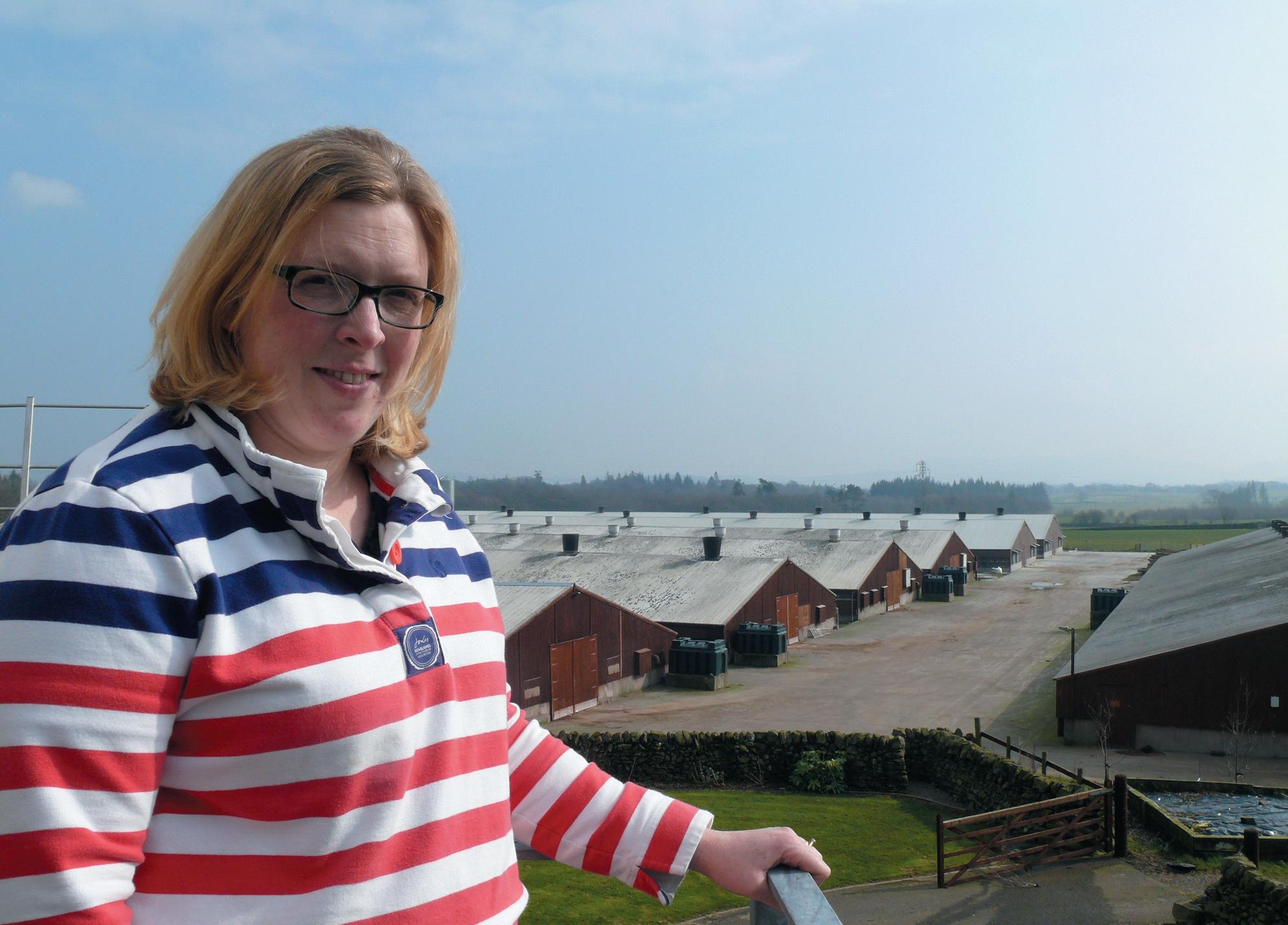
Marcella Eakin-Watt is one of only seventeen broiler rearers left in Scotland as processing plants have almalgamated, closed down and become like hen’s teeth!
Marcella Eakin-Watt ‘practically grew up in the hen house’ in the poultry industry in Maghera, County Londonderry, Northern Ireland.
“Initially we were in the egg business until the Edwina Currie Salmonella scare – we almost went bust, but my Dad (Bobby Eakin) sold the nesting boxes to keep our heads above water and we converted from producing eggs to rearing chickens.
“The nesting boxes helped pay for an extension to the hen house and towards building some more houses.”
The Eakin’s knew that there was more competition for chicken across the water in mainland UK, so moved to Scotland 20 years ago. They purchased Drumbrae – an 80 acre sheep holding at Lauriston, near Castle Douglas.
Over the years they have grown the business, with seven sheds now housing 270 000 birds at maximum capacity.
After graduating with an HND in Poultry from Auchincruive, Marcella was offered a scholarship to Germany, but decided to take a position with Hamish Morrison in the Scottish Borders instead. She enjoyed the job
but, as she did more in her family business over the years, she knew that a lot of money was wasted there.
After a year at Morrisons Marcella, then aged 22, got engaged one day and came home to join in the family business the next. She was running Eakin Poultry by the time she was 24. Her husband Campbell, is practice manager at the doctor’s practice.
In September 2013 Marcella was dealt a blow – her father passed away. Six weeks later she received another blow – Hook 2 Sisters, where she had been marketing her stock gave her the brush. “I did get two crops warning and a 5p instant drop. They changed it to a 2p drop when I argued, but they then fiddled with our feed, which was a disaster for the birds!”
Marcella decided to sit and wait. She had faith and left it in the Lord’s hands.
“Some people thought I was mad. I did approach Frank Bird, a family firm in Carlisle, but they couldn’t take me on. I had a guy come to the door from Northern Ireland –Chesterfield Producers – a new processing plant, they wanted me to grow for them.”
Marcella received another
phonecall from Cafour at Preston and she was impressed with the well run factory and the very nice people when she visited.
She phoned Frank Bird once more but was told there was no room.
Two weeks before the last birds were to go out at the start of March 2014, Marcella was sorting out a contract with Cafour. She was about to sign, but was talking to her solicitor about tweaking it.
Mark Bird called.
“Money was not talked about, I trusted him and I got in. There is no contract but it is good and I’m happy. It can be hard to sleep when you are dealing with some other companies, worrying whether you’ll get paid.”
The chickens are thinned out at 35 days and the rest are gone by 47 days. “Thinning out at 35 days means that you are going into the shed twice to clear birds out and Farm Tractor want to push for a ‘no thinning out’ rule, as they reckon it increases the risk of Campylobacter.”
Marcella reckons that the housewife needs to cook the chicken right – full stop! She also feels that cheaper chicken with higher rates of Campylobacter will be pulled in from
Farmer: Marcella Eakin-Watt T/AEakin Poultry Ltd
Farming: Drumbrae Farm
Location: Lauriston, Castle Douglas Area: 50 acres grassland
Europe.
“We are aiming for 2.2kgs at 35 days and 3.7kgs at clear out.
Frank Bird sells on the open market, so Marcella isn’t sure where her birds end up these days. She knows that he supplies butchers and Smithfield. In previous contracts they have gone to TESCO, M&S, Aldi, Lidl and KFC.
“Most of these supermarkets wanted their own audits, which was a bit of a nightmare. Now we are just audited by ACP.”
Another plus point working with


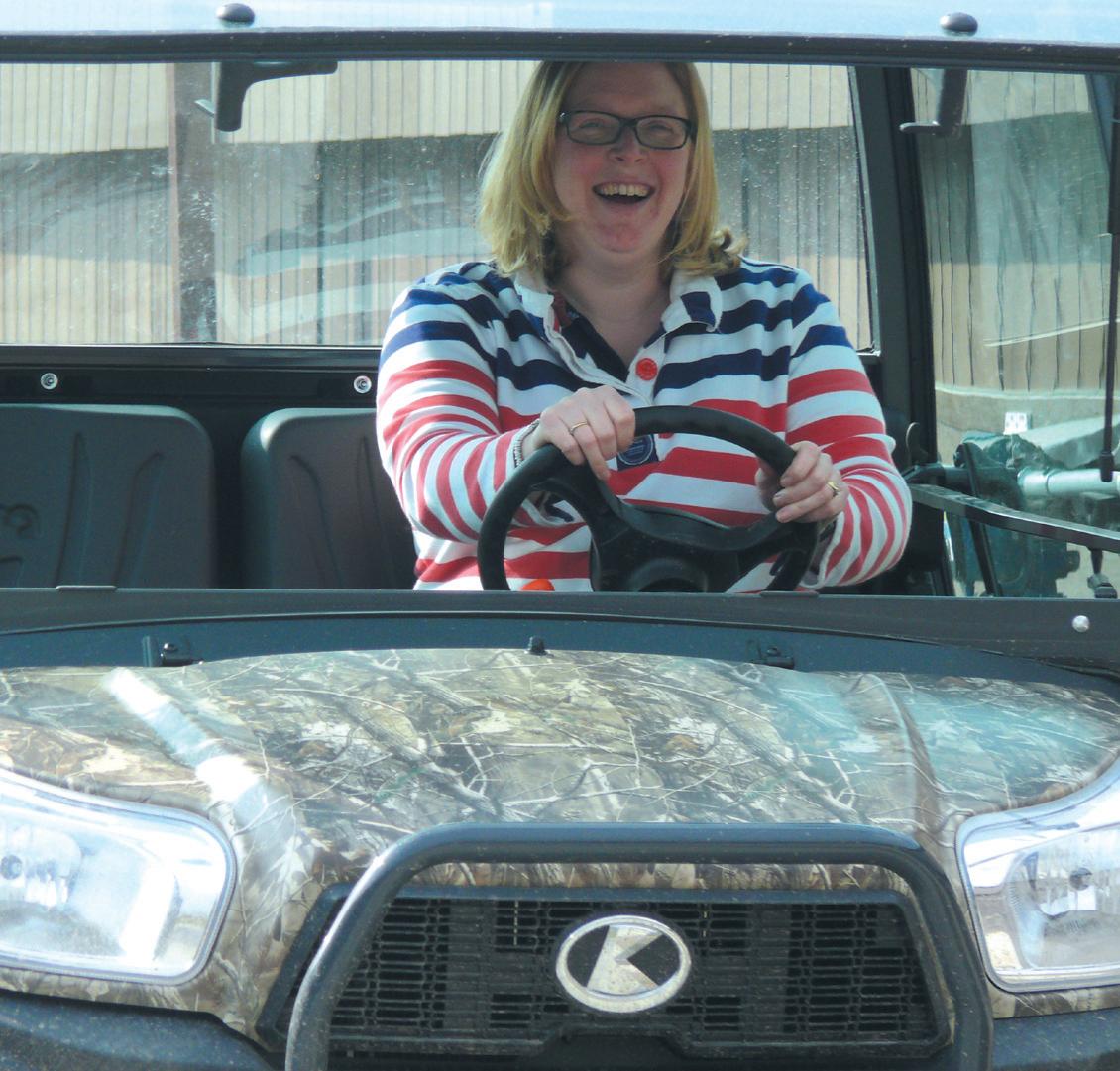
Frank Bird is that he supplies a group of Ghurkhas as catchers instead of Marcella employing locals for the event which takes place through the night to make it as stress free as possible for the birds. He also provides the haulage.
In the past the turn around used to be a couple of days to clean out, disinfect, bed and rehouse the next intake. But nowadays she does all the mucking out herself and has an 11 day turn around. She can muck out a shed in two hours. It is then brushed and a power washing company,
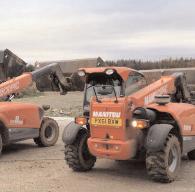
Powheads, come in.
Marcella is currently looking to take a keen young person on board, who is willing to learn and that can work with a woman. “When I find the right person I will expand the business.”
In her spare time Marcella enjoys property developing. Currently she is converting the original farm steading courtyard into a 2 bedroom and a 3 bedroom house and is planning a function room for lectures etc, a gym, office and another one bedroom flat.


In the wake of the huge publicity regarding milk now being cheaper to buy than bottled water, Princess Anne spoke out recently to encourage dairy farmers to keep up the good work. With The Scottish Government now promising a review of what’s happening to the milk market, Fiona Turnbull looks into dairying in her home area – Kinross-shire.
Only three milk producers remain committed to continuing production in Kinross-shire – The Lawrie Family at Cuthill Towers, The Smiths at the Holton both outside Milnathort and the Greer Family at Wharlawhill near Carnbo. The three dairy farms that are left are home to 540 dairy cows that annually produce over 4 million litres of milk.
Norman Greer and his family moved to Wharlawhill Farm, near Carnbo from Nothern Ireland in 1990 with his late parents, Tom and Anna and brother, Harold. Norman says, “Wharlawhill is an ideal dairy farm and Kinross-shire is a good grass growing area. The land and steading here offered us a good infrastructure and we have grown the business steadily since.”
The farming enterprise extends to 1200 acres and Norman now farms with his wife Tricia and sons Calum
and Jamie. They own 800 acres with the remainder on rental agreements. Whilst most of this is in Kinross-shire it also includes part of Tricia’s family farm at Boquhapple, Thornhill, near Stirling, bought in 2012.
The dairy herd of 230 Holstein Friesian’s is milked twice daily and the milk produced is sold on contract to Sainsbury’s through Muller Wiseman. “We were offered this contract in 2007 and submit our costs to the Sainsbury’s team quarterly. All of the suppliers do this and the price paid to us is directly related to of what the milk costs to produce. Through the producer group we can let the supermarket know about challenges such as bad weather and trends in our costs and it’s good to know our milk is in local stores.”
The herringbone parlour by De Laval is now 24/24 having been extended twice to accommodate the growing herd. An additional
cubicle shed built in 2009 has a wider passageway, larger cubicles and includes more comfortable mats.
More recently a 500 000-gallon slurry store was erected and the latest investment has been an automatic calf feeder, which is already proving a success in the rearing shed.
Norman sees continued investment as crucial to remaining in milk production. “It’s been a gradual process and costly but having the correct infrastructure has enabled me to grow and develop the herd. In recent years the cost of production contract with Sainsbury’s has been very positive for the business,” he says. Increasing numbers to over 200 cows has also been made possible with the help of Wharlawhill dairyman Jock Seaman, who has been with the family for nine years.
Norman adds, “Jock is a great asset, he’s an extremely experienced dairyman who is very reliable and
shares my love of looking after the cows.”
The herd calves all year round and the majority are housed throughout with just the low yielders grazing outside during the summer. At the moment all heifer calves are retained and these calve at 24 months. The average number of lactations is five and this is something that Norman and oldest son Calum would like to increase further. Calum (19) is studying an HND in Agriculture at Craibstone but devotes as much time as he can to the farm. The father and son work together to select sires that will suit their cows and help to balance increased yield with longevity. Wharlawhill is not solely a dairy unit – 250 acres of cereals are grown with the entire acreage utilised for feed. There is a small herd of 25 suckler cows and Norman has developed a dedicated beef-finishing unit with up to 250 finishing cattle on

the holding at any one time. All are homebred and bought in stores are taken through to finishing and sold deadweight to Scotbeef at approx. 320-340 Kgs deadweight.
The 700 Greyface, Lleyn cross and Blackface breeding ewes are due to lamb in late April, hopefully after the spring work and before silage, with the lamb crop also all finished and sold through Scotbeef or Caledonian Marts at Stirling.
With most of the field work including silage being carried out themselves, younger son Jamie (17) is now at home full time on a Modern Apprenticeship hoping to move on to agricultural college in the next year or two. Having an enthusiastic younger generation is a great motivation to ‘maintain the momentum’ admits Norman but he is sad to see the current fragmented state of the dairy industry. He concludes “At the point of deregulation there was a 1ppl gap in the milk price between the best and worst contracts – that gap is now up to 10ppl. Every dairy farmer is working hard and putting in long hours so it seems to be a very unfair and unjust situation that we are now in. The poor price being paid to so many producers is putting a massive pressure on businesses and this is not good for the industry as a whole.”

The remaining two milk producers in Kinross-shire are in the parish of Orwell, which encompasses the village of Milnathort.
Doug and Dan Smith farm at Holton Farm with their parents, they milk 80 cows and the whole operation is entirely family run. The brothers moved across to the French Montbeliarde breed a number of years ago and find the improved confirmation adds value to their bull calves, which are more suited to beef finishing. Butterfat and protein are higher in the milk too.
The Lawrie Family at Cuthill Towers have been dairying here for over 60 years since Jim Lawrie moved from the west of Scotland with his herd of red and white Ayrshire cows. Arthur now runs the business with his wife Susan and their sons, David and James. The family continues to breed outstanding Ayrshires – taking out the championship at the Royal Highland Show last year. The herd has grown to 230 head that average 8500l. With a recent investment in a new steading, milking parlour and slurry store the family are committed to continuing production.
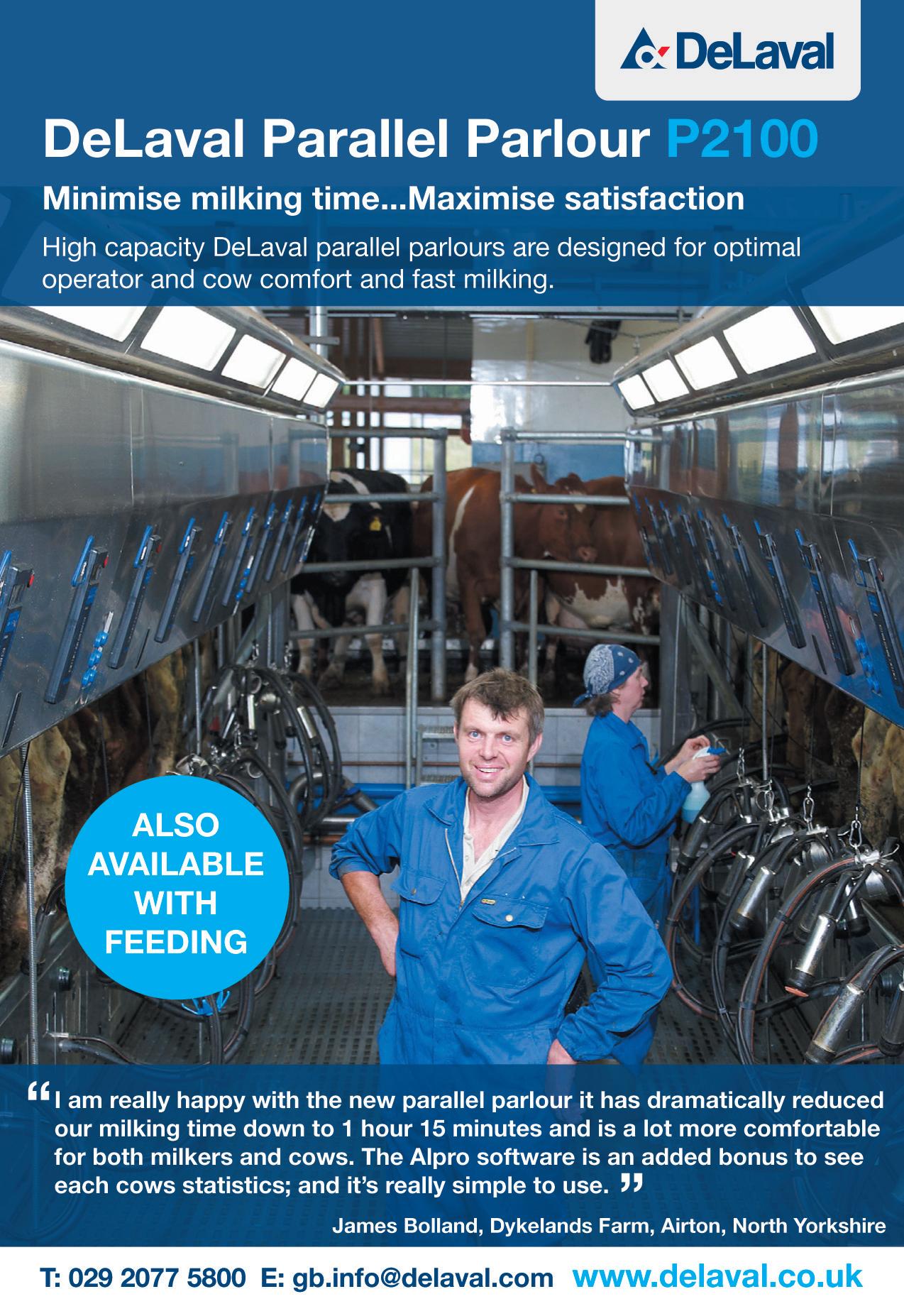


Rural Affairs Secretary Richard Lochhead published a 25 point plan to help support the Scottish dairy sector on a visit to a dairy producer in Angus on March 24.
Mr Lochhead met with William and James Taylor, and their father William Snr, at Baldoukie Farm near Tannadice to launch the action plan which aims to improve the resilience of the sector and provide the right platform to ensure the entire industry can thrive in the context of volatile market prices.
He said: “The dairy sector is vital to Scotland’s farming and food industry and the wider rural economy. We have 900 dairy farms, with 2000 processing employees, which generate well over £400 million of output –that’s 15 per cent of our total farming productivity. This sector’s future is of real importance to Scotland.
“Scotland has a powerful brand –both at home and abroad – in its food and drink offering and the dairy sector is at the core of that. I look forward to putting today’s plan into action and working with all our partners on its successful delivery.
“We want to grasp the opportunity that the domestic market offers for our high-value products as well as accessing the lucrative overseas markets. I hope that the Scottish Dairy Plan will put the dairy sector on the same platform as Scotch Beef, salmon and whisky, delivering long-term sustainability and helping to shield it from the global volatility.”
The Scottish Dairy Plan takes into
account the recommendations made by the Scottish Parliament’s Rural Affairs, Climate Change and Environment Committee following its own enquiry into the Scottish dairy industry.
There are five main themes set out in the Plan:
* Market development
* Promoting best practice in dairy farming
* Promoting a transparent and efficient supply chain
* Supporting First Milk in transforming its operation in Scotland
* Ensuring international rules are correct
Last year, in response to Ambition 2025, the Scottish Government established the Dairy Growth Board and Dairy Hub to drive forward moves towards a thriving dairy industry. The themes set out in today’s plan are in large measure to those set out in Ambition 2025.
Mr Lochhead visited family business Taylors of Tannadice. The business was established 40 years ago and is a partnership between William Taylor Snr and his two sons William and James. The farm has an additional three full-time employees plus one part-time worker and two relief dairy workers.

the strategy for the season and the pasture risk,” he says. “The treatment recommendations can vary tremendously according to time of turnout, and whether it’s cattle’s first, or second, grazing season. It’s definitely not a ‘one size fits all’ approach.”
Planning ahead to manage worm burden challenges will help to ensure farmers reap the economic benefit of targeting heifers to calve at 24 months.
“Parasitic infection can significantly hinder the performance and ultimately the productivity, of dairy replacement calves,” warns Dr Andy Forbes, COWS technical representative and Honorary Professor at the University of Glasgow’s School of Veterinary Medicine.
“Challenges from parasites such as gut worm, lung worm and liver fluke can all play a significant role in hindering calf health.”
Dr Forbes says that ensuring a strategic worm control plan, in line with the COWS guidelines, is tailored to address the challenges of the farm environment with a specific system in place is therefore crucial to avoid such setbacks.
“Losses to daily live weight gain in heifer calves can have a significant knock-on effect to the overall long-term performance of the dairy herd and effect at what age they will realistically calve down,” says Dr Forbes. “It can seriously affect the replacement plans for a dairy herd, affecting when a heifer will join the main herd.”
Pastures all pose a potential risk for grazing animals in terms of parasites, and especially gut worms. Therefore, it’s important to identify what risk each pasture falls into, so this can be incorporated into the control plan, and cattle parasite burdens managed accordingly.
“A worm control plan should be assessed regularly by farmers, and their vet and SQP advisor, to tailor
It’s also worth considering the risk of lungworm, although this parasite is much less predictable. Cattle should be closely monitored for signs of husk from lungworm infection, regardless of the pasture risk.
Then, for farms with a history of liver fluke infection, or where land lies wet or muddy and is likely to have a heavy population of snails, the control plan must also take liver fluke into consideration.
“Maintaining a record of historical parasite infections will be beneficial when planning measures to deal with liver fluke in the future,” says Dr Forbes.
“If possible, young stock should be kept off high-risk pastures, but if they are exposed to the infection, then treating with a flukicide at housing is recommended. Treating stock again, in June or July, in high-risk situations, will also help reduce the overall level of infection on-farm.”
Guidance provided by COWS promotes the strategic use of anthelmintics. Combining this with good pasture management can help reduce the population of infective larvae on grazing pastures, and the subsequent negative knock-on effects to heifer health and productivity.
The COWS guidelines are there to ensure healthy and productive stock, and to reduce the risk of anthelmintic resistance development.
“It’s all about managing the parasite risk to cattle in a responsible, strategic manner,” adds Dr Forbes.
“Working alongside vets and SQP advisors will enable farmers to tailor their on-farm control strategy according to both pasture risk, and specific farming system.”
In less than a week (Tuesday 1st April 2015) the EU dairy quota system will be no more and Irish dairy farmers like their neighbours across the UK and the rest of Europe will be free to milk as much as they want. The enthusiasm and excitement across the industry is palatable and very understandable.
The benefits of unshackling the industry here from Europe’s outmoded system of protections are self-evident – the island is probably the most ideal patch of dairy pasture in the northern hemisphere.
There are more than 17 000 dairy farms in Ireland, producing over 5.5 billion litres of milk per year. The Irish government has projected a 50% increase in dairy production and output by the year 2020, according to plans contained within the
Department of Agriculture’s ‘Food Harvest 2020’ report.
Most commentators believe that this target is very achievable. In the decade leading up to the introduction of quotas in 1984 milk production in Ireland increased by 5.7% per year associated with a near 50% increase in milk yield/cow and an 11% increase in cow numbers. The world market for dairy increases by 15 billion litres every year, almost 3 times Ireland’s total annual production.
While Ireland’s dairy production profile is small (1% of global production) relative to some of the major dairy production regions it is heavily export orientated with nearly 90% of its produce exported to over 140 countries worldwide with the top five destinations being UK, Germany, Netherlands, US & China.

by Kate Davis, De Laval
The main products include cheese, butter, casein, Skim powder, whole milk powder and increasingly in recent years a variety of dairy nutritional ingredients. Some 15% of the global infant formula production is centred in Ireland with three of the largest producers located in Ireland –Danone, Pifzer and Abbott.
Dairy processing is conducted, for the most part, by around ten farmer owned dairy co-operatives including (from the largest) Dairygold, Lakeland, Arivo and Arrabawn who process over 60% of the milk pool.
The two largest processors are the plcs Kerry Group plc and Glanbia plc.
Ireland has enjoyed a comparative advantage in the production of milk within the EU due to the grass-based feeding system for its dairy herd.
Dairy farming is operated on a

The Moorpark Dairy on the Isle of Lewis, in the Outer Hebridies has taken big step forward, purchasing a pedigree Guernsey herd. Moving the cattle from one end of the country to the other – the herd has been transported to a farm near Lockerbie, Dumfriesshire on the first leg to Lewis.
The Cattle will remain there after moving from Norfolk from the largest Guernsey Herd in England, which is now being sold off as the owner retires after 40 years of dairying.
The cattle travelled well on the trip to Scotland and are being given time to settle down before the onward move to Lewis in about 6 weeks time. The 40 Guernsey cows was transported in a double Decker livestock transporter to Lockerbie and the same transporter will be used to
bring the cattle north to Lewis.
Construction of the new dairy parlour and cubicle building, all under one roof are underway.
The Golden Guernsey A2 milk will soon be offered for doorstep deliverys and to shops and hotels in Lewis as well as fresh cream, butter cheese and we are hoping to make Farmhouse Gelato Ice Cream.
It has been a big investment to try bring back fresh milk to the Island. The use of Guernsey Cattle to produce A2 milk was the best option to give customers a premium product not available here in Lewis at a price to match supermarkets as much as we can delivered to the doorstep.
To see the Cattle milk for the last time in Norfolk and load onto the transporter was a tearfull time for all concerned after breeding and milking for 40 years. The rest of the 140
strong herd had already left the farm. We have taken the top 40 milking cattle from the herd with full pedigrees to form our new herd. The farmer and his family will travel north to see the cattle here in Lewis later in the summer.
The trip north to Lewis will be under special license as the second leg has the ferry crossing. The double decker transporter is is the only way to move them north to Lewis and is designed for Exporting Cattle.
Moorpark Guernsey Herd is now on Facebook. Photos will be added to the site of the cattle on their journy north from Norfolk. A special Thanks to the family in Norfolk and the transport company as well as the Lockerbie Farm for their kind help and taking care of our cattle until the onward trip north.
seasonal grass based system where cows calve in spring and eat as much grass as possible throughout their 300 day lactation. This is facilitated by the country’s moderate climate, which makes it very suitable for grass production. The grass-based feeding system has been more cost efficient than the mainly grain-fed systems used in continental EU countries. The pasture-based feeding system also has the advantage of being able to be portrayed as a more natural production.
Significantly, over the last five years, the percentage of farmers producing over 275 000 litres has risen from 10% to 15% of the total number of producers. This scale has facilitated increased investment at farm level, and the adoption of a more commercial focus.
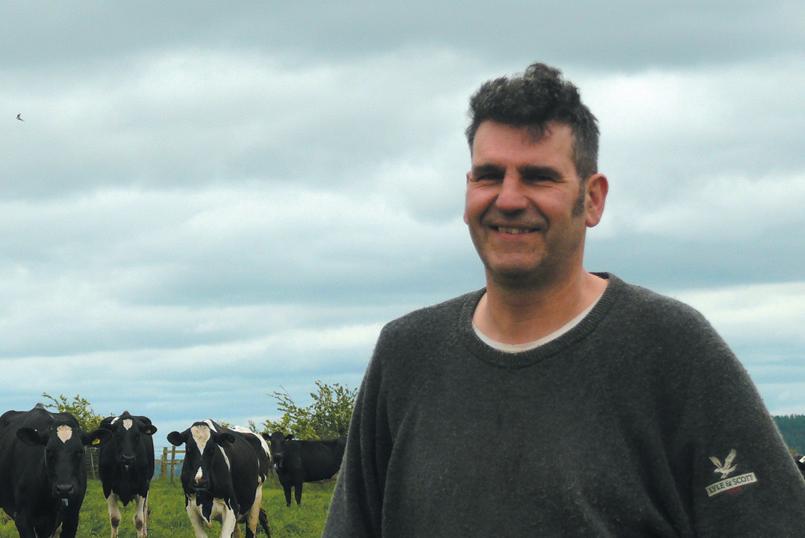
Andrew Edgar, one of the pioneers of the Dairy Skills initiative running in Dumfries and Galloway has been offered a post by a local dairy farmer.
It marks the next step in an initiative aimed at helping young people begin on-farm careers.
The Dairy Skills Initiative is a unique partnership involving SRUC, NFU Scotland. LANTRA, Dumfries and Galloway Employment TAP and Skills Development Scotland. It offers school leavers and others with no previous farm experience 12 week placements on local dairy farms, at no cost to the host farmers.
Andrew Edgar (21) who, with Eddie McKie (19), has been offered a trial period with Richard Beattie, another local farmer.
Brian Williams, SRUC Work-based Learning Manager, paid tribute to the work of farmer Stuart Gibb and Gary Mitchell of NFU Scotland in putting Andrew in touch with his new mentor. However he acknowledged Andrew had made his own contribution.
It is hoped the scheme will be opened to new trainees in March.


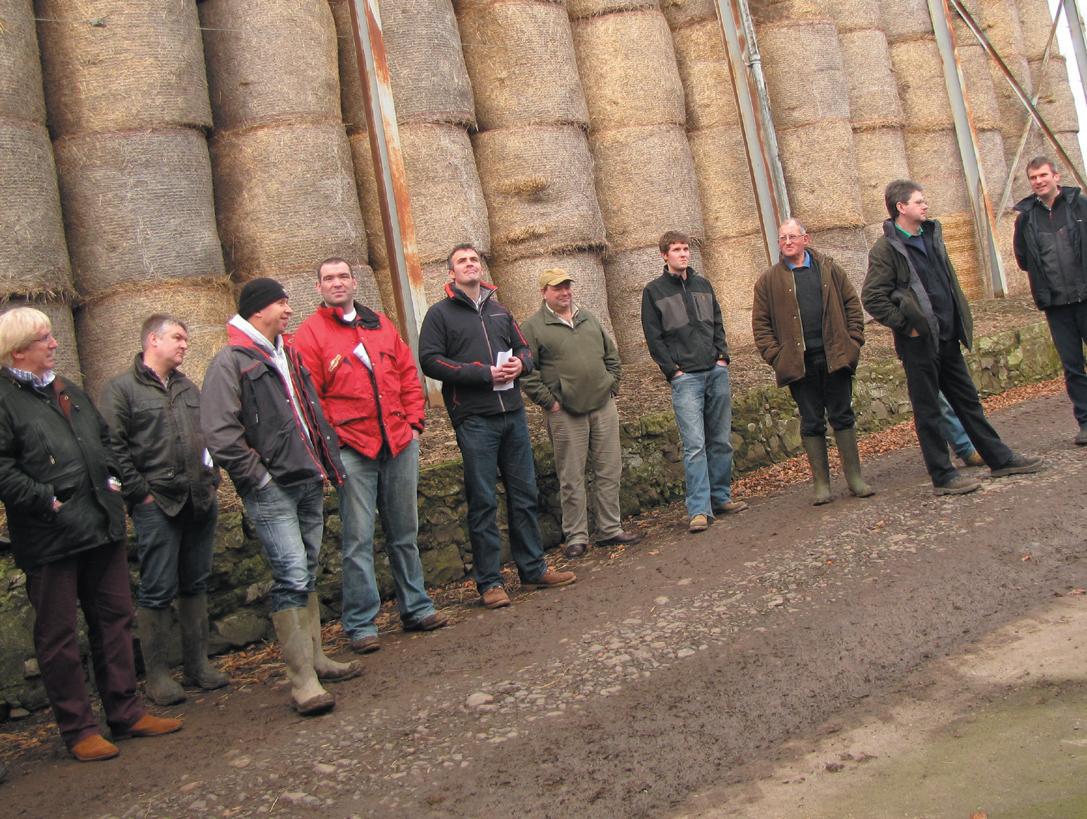
round 30 farmers attended HGCA’s Fife Monitor Farm meeting in March for discussions around fertiliser spreading and crop nutrition.
The Monitor Farm meeting in Fife – hosted by Alison and Danny Milne at Auchtermuchty – covered the importance of calibrating fertiliser spread patterns; the value of blended against compound fertiliser and the role of farm account analysis in effective business management.
Stephen Young, the project’s facilitator, said: “We have a lot of data and information at our fingertips –about crop nutrients, the ability of your spreader to spread fertiliser, and in our business accounts – but what’s important is knowing what to do with it. We need to know how to pick out the useful bits and use that to improve our businesses.”
Andrew Stirrat from Pro-Test spoke to the group on fertiliser spreader testing and fertiliser types. Andrew is a farmer/contractor, who started testing the spread pattern of fertiliser spreaders 14 years ago.
His main point for farmers at the meeting was that they should get their spreaders tested regularly.
He said: “Can you afford not to test your fertiliser spreader? Farmers can get their machine professionally checked over and also put their coming season’s fertilisers through their machine to check for spread pattern.”
Farmers were also reminded that the wider they want to spread, the smaller the choice of suitable material available.
After discussions around spreader testing, Greg Dawson gave a presentation on crop nutrition, focusing on how to value fertiliser in a compound or blend against the cost of straights. He also highlighted the
nutrient value of farmyard manure.
Gavin Dick, HGCA Scotland Manager said: “The meeting highlighted the physical and financial benefits from attention to detail in areas, which growers often take for granted. For example, knowing where your fertiliser is landing is increasingly important – not just because of tight financial margins, but the increasing demands to preserve biodiversity and eliminate diffuse pollution.”
The meeting finished with a session on using farm accounts from Jim Booth of SAOS, employing data as a business management tool. Jim urged the group to analyse their own business to see where improvements could be made.
Gavin added: “Tight margins also make bankers more nervous, so knowing not only your own financial performance, but how you compare with others, is an important negotiating tool.”
Key messages from the meeting:
Fertiliser Spreader Testing
- Test your spreader every year to check for wear and tear
- Take time to set up and maintain your spreader/tractor
- Understand what products you are spreading and the differences between them
Crop Nutrition
- Ensure you work out the cost of your fertiliser to check you are getting good value compared to straights
- Know what the nutrient value of dung is, so you can adjust your fertiliser application to your crop needs
- Don’t underestimate the need for sulphur on your crops

Contact :Charlie MacLaren – 07711 849474 or Andrew McCartney – Border Farm Solutions – 07912 388 708
Farm Accounts
- Use the data you have as a management tool
- Do a gross output analysis as a simple benchmark
- Understand what your accounts are telling you, be forensic.
If you don’t understand ask! The next meeting at HGCA’s Fife Monitor Farm is on 6 May 2015. For more information, contact Gavin Dick, HGCA Scotland Manager, on gavin.dick@hgca.ahdb.org.uk or visit hgca.com/fife

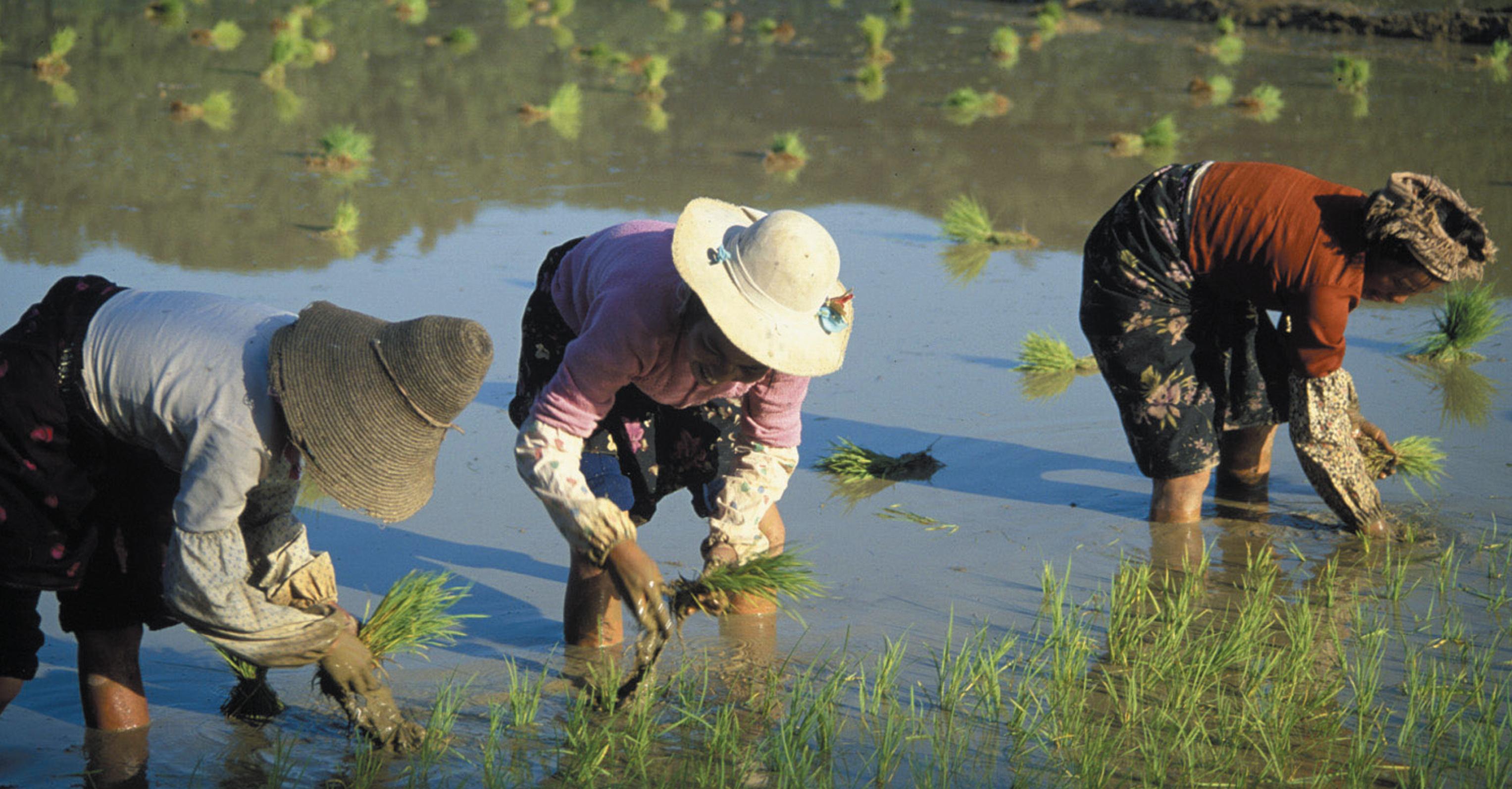
In order to ensure food security for its sizeable population, China needs to find ways of overcoming pressing environmental challenges and developing a science to policy interface. That was the key message of the China-UK Summit for Environmental Science to Policy Roundtable held last month in Beijing, featuring leading Chinese and UK scientists.
Researchers from the Chinese Academy of Sciences and China Agricultural University met with colleagues from the UK’s Centre for Ecology & Hydrology, James Hutton Institute and Lancaster University to share current experience and best practice from UK, Europe and China.
The event was opened by Zhang Laiming, vice-president (vice minister) of the Development Research Centre (DRC) of the State Council of the People’s Republic of China. Barbara Woodward, British Ambassador to China, also highlighted the importance of research excellence and the need for sound evidence in support of policy.
The discussion focused on three aspects: engaging with stakeholders in environmental sustainability and food production in both the UK and China; developing a timetable for producing narratives on how to develop an integrated approach to environmental and food security policy, including constraints to achieving aims; and developing a framework for Sino-UK collaboration on developing a science-policy
interface.
Professor Shiji Gao, Director General of the DRC’s Institute for Resource and Environmental Policies, commented on the need to, “work together to continue this dialogue, and to increase the cooperation between UK and Chinese scientists, policy analysts and decision makers in our united fight against environment pollution in China as well as in the world.”
Professor Bob Ferrier, Director of Research Impact at the James Hutton Institute and co-chair of a session on science to policy experiences during the Roundtable, said: “The best environmental policies are those supported with robust scientific understanding and that requires the policy and research communities to work closely together. We aim to share experiences between our countries to meet that challenge.”
Professor Alan Jenkins, from the Centre for Ecology & Hydrology, commented: “Many of the environmental problems faced in China have been addressed in the UK in the past. Sharing our experiences in environmental science and in making this available to policy makers is a clear opportunity. In return, we have much to learn from the current environmental ambition in China and the restoration and remediation techniques being employed on a vast scale.”
Similarly, Professor Kevin Jones from the Lancaster University Environment Centre, said: “This
roundtable brought UK scientists and some of China’s policymakers concerned with issues of environmental protection, food security and sustainable agriculture, and biodiversity protection together. We were anxious to learn from each other about problems and approaches. How can scientists ensure the work they are doing is relevant and taken up by relevant agencies? How can policy makers ensure that the complexities and multiple demands on our natural resources feed into sound management? I think this meeting signalled a genuine willingness to work closely between countries and areas of specialism, which could lead to exciting collaborations.”
The paper “Addressing China’s grand challenge of achieving food security while ensuring environmental
sustainability,” recently published by Science Advances and co-authored by UK and Chinese scientists, is the product of previous Sino-UK scientific interaction and focuses on four specific recommendations:
• The definition of a science-based “ecological red line” to guarantee arable land for food production;
• The need of coordinating environmental policy and agricultural policy to maintain natural capital for sustainable food supply and food safety;
• The implementation of integrated research programs on environmental sustainability and food security;
• The need of changing governance structures for better coordination and consistency of policy-making in food security and ecological preservation.


This month we look at some farmers who have undertaken personal development programmes and how they have improved their businesses as a result.
Spring is my favourite time of the year, the days are getting longer and generally warmer as well. The down side is that I have had to come in from the farm to write this…..! Every day is special (or at least a bonus) but today was even more special. It is not often that I put my ‘working clothes’ on, and make time to potter in the workshop with my son. I do struggle to justify calling myself a farmer these days and I really should make more time to do things that I enjoy doing.
So what is my job title? If you had asked me 5 years ago I would have answered ‘The Boss’.
Pre 2007 I was very much a get my hands dirty, get stuck in, led by example boss, but I did only have a small team working for me so when we built the new shop and café in 2007 my life changed. I suddenly had to lead a team of 40!
I can remember that during the first summer we had a lovely lad called Sam, 6ft something and well built – but he was just so slow at doing anything. One day I barked at Sam and told him to get a move on! This approach generally worked well
out on the farm, but before I knew it Sam was in floods of tears and I was wondering what to do next! Kirsteen was called in to calm things down. I suppose at this point I realised that I would need to have a different approach to the management of the team.
In 2011 I applied for the Rural Leadership Program, which I had been asked to go on for a few years before this but I made the excuse that I was too busy! I really enjoyed the program although there were parts, which I found challenging, mainly the Leadership and one to one coaching. I called this the ‘fluffy’ stuff.
After the RLP I was asked to go on a pilot for a program called Harvesting the Growth. Again, a really useful program and something that I have got a lot out of both personally and for the business. The one part that has been life changing has been the leadership coaching. I have been really lucky to have been mentored on by Christine, who has been working with me to develop my leadership skills. So what does this involve? Basically she gives me
confidence to believe in myself because it can be a very lonely place at the helm of a growing business. It is not about turning yourself into a different person but about recognising your strengths and your weaknesses then working to develop them. It is also about recognising the strengths and weaknesses of the team around you so that you can capitalise and use these to your advantage.
One of the big pit falls in rural businesses is that people are put into positions because of who they are and not for their skills. Another trap is that you hold on to people who are working with you for the wrong reasons. As part of the HTG we went on a learning journey to London, where we met with John Stewart (Chairman of Legal and General) who has led many large teams during his career. The advice that he gave us was to grade all of our team in to A’s, B’s and C’s. You want the A’s, the B’s can be developed in to A’s and the C’s just need to be dealt with and moved on as quickly as possible! After this trip I sat down with my General Manager and graded all of our team and took the appropriate
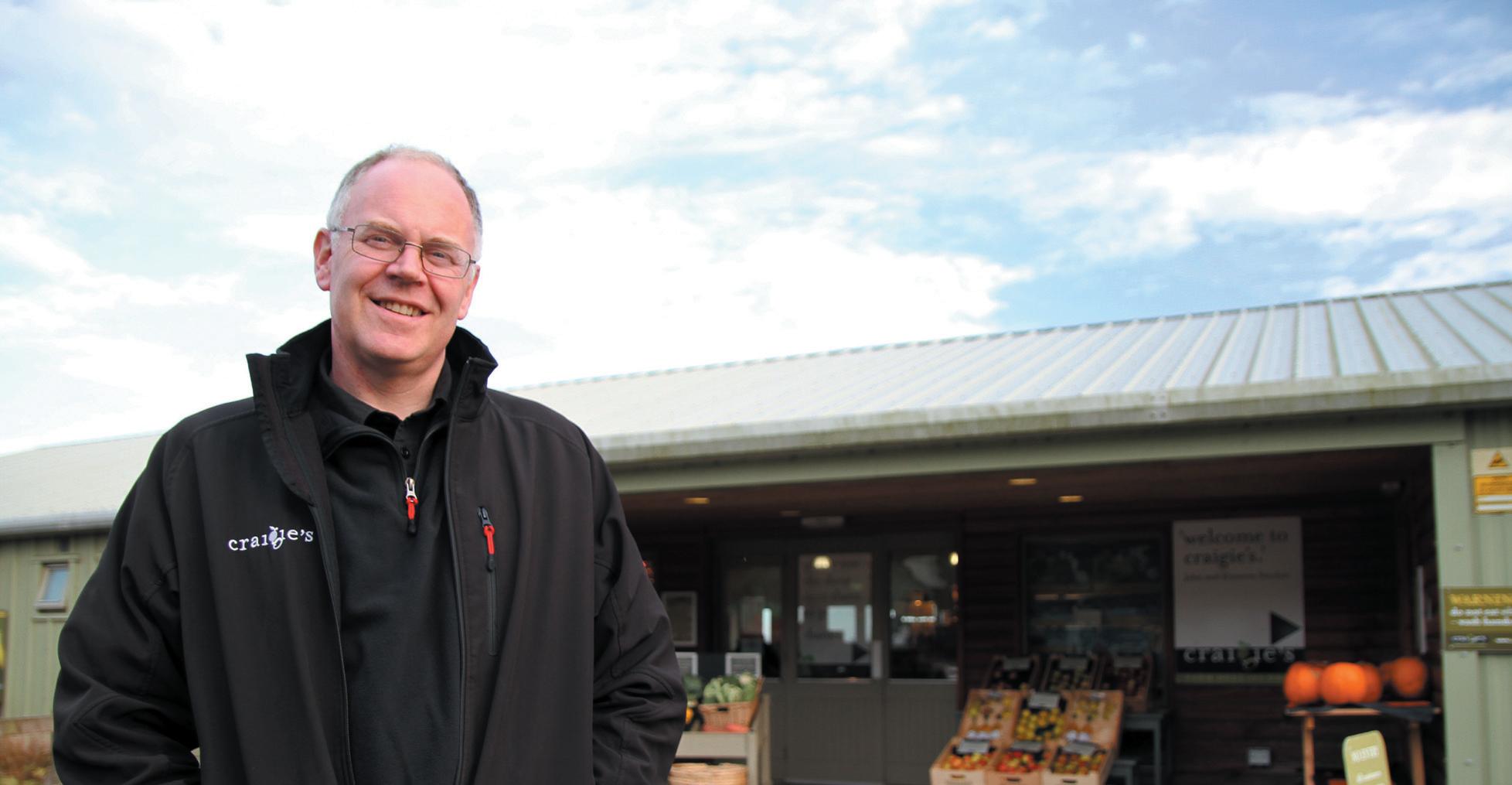

action…..
Has Chris managed to work her magic on me? It is still early days but I asked Kirsteen the other day if she had noticed much difference in me over the last 6 months? Straight away she said that she had noticed a big difference, I was no longer ‘jumping in with two feet’ and I was not as grumpy!
What is my job title now, well that is simple I am a Leader and a happy one at that!
Would I recommend the Rural Leadership Program? Absolutely, I just wish I had made the time and taken part in the program two years before I did.
If you don’t think you have time to commit just remember we all have the same number of hours in a day, the difference is how you choose to use them. I now choose not to be at the coal-face every day! I have a great team who are more suited to that so I can spend more time on strategic planning, the development of the business and myself. As a result I have a business ready for future growth.

Twenty-two BIG groups were set up across Scotland, each involving up to 18 farm businesses run by producers, who are determined to improve and grow their businesses.
The groups, which were set up in 2010, harnessed financial baseline monitoring and benchmarking figures to improve members’ co-operative performance, as well as allowing producers to investigate opportunities to collaborate and exchange information.
An Ayrshire livestock producer has seen his hill sheep net margin improve by £1522 and his labour input reduce substantially following a decision to change the breed of sheep run on one part of his farm.
Chris Grierson, who runs Laight and Minnivey Farms near Dalmellington with his wife Tracey, made the decision to switch from Blackface ewes to Welsh Mountain and Herdwicks on part of the hill at Laight.
The unit is an upland/hill farm with 81 ha of permanent grass and 684 ha of rough grazing – 644 ha owned at Laight with 121 ha tenanted at Minnivey. The farm runs about 750 mostly Blackface ewes of which 650 are Blackface ewes bred both pure and crossed with the Bluefaced Leicester for production of mule ewe lambs for sale. Additionally 40 mule ewes are bred to Texel rams and there are 60 Welsh Mountain and Herdwick ewes.
The Griersons first considered the potential of alternative hill breeds after a thought-provoking visit to Tardoes Farm, Muirkirk in June 2012, organised by the Ayrshire Business Improvement Group (BIG). The host farmer, David Cooper, was at that time running 3000 Herdwick and Welsh Mountain ewes and 780 hoggs.
QMS’s network of Business Improvement Groups (BIG) has delivered results for the 350 or so beef and sheep producers involved.
His true hill flock routinely scanned at 115% and over 90% of lambs were sold or retained without the need to give them any concentrates, feed blocks or conserved forage. David had to assist only a couple of ewes each year at lambing and these were then earmarked and culled.
“Chris was so impressed by the performance of this flock that he decided to replace the Blackface ewes on an under-performing area of his own hill with some draft Welsh Mountain and Herdwick ewes purchased from David Cooper,” said BIG group facilitator, Raymond Crerar of SAC Consulting, a division of SRUC.
The challenge the Griersons face can be traced back to 2000, when a 100 ha block of hill was returned to the Grierson family after opencast. Before opencast, the block carried 150 Blackface ewes, which were crossed. Following its reinstatement 100 Blackface ewes were grazed on the area and consistently only scanned at 70% with a very high barren rate. This number was gradually reduced.
“The numbers on this block were then gradually reduced to 70 ewes but scanning still proved disappointing despite concentrate feeding being introduced pre and during tupping and a generous feeding programme from scanning until mid May,” said Mr Grierson.
“Despite reducing the number of ewes, scanning was very disappointing at consistently 70% with a high barren rate and only ever half a dozen sets of twins from that block,” said Mr Grierson. He was worried about the lack of productivity and the future of his LFASS payments on that area if it couldn’t be grazed.
As a trial, the Griersons purchased 35 Welsh Mountain and 35 Herdwick
draft ewes last September and turned them onto the block. The ewes foraged well and seemed to thrive. He borrowed two tups (one of each breed) and kept the ewes bred pure on the hill to give a direct comparison between breeds.
The ewes received the same health treatments as the existing stock, including a Heptavac vaccine but, unlike their predecessors, they received no supplementary feeding at tupping.
The 70 ewes all scanned at 120% in early February with 14 pairs expected in the Welsh Mountains, three pairs in the Herdwicks and only three sheep, Herdwicks, scanned empty.
After scanning, the ewes carrying singles were returned to the hill and not fed. The ewes carrying twins were brought inbye and offered silage and as a result of the weather they were initially offered Rumivite feed blocks.
Due to the harsh winter and snow cover on the inbye, three bales were consumed but interestingly the four feed blocks that were offered were left untouched and had to be fed elsewhere on the farm.
Like many hill farmers, the late snowfall resulted in sheep losses and nine of the ewes were lost in a drift on the hill pre-lambing. The single bearing ewes were lambed on the hill. At lambing time the sheep were monitored from a distance with no intervention required. All of the ewes lambed unassisted.
At marking, the Welsh Mountains and Herdwicks collectively tallied a 103% lambing. To date the lambs have grown well, in particular the Welsh Mountain lambs which appear better fleshed. The lambs are destined for the light lamb market with some select females being
retained for breeding.
A like-for-like comparison was then carried out to assess the cost benefit between the two different sheep breeds on the same block of land.
The net benefit was £1522.50 as a result of no concentrate costs and reduced silage and an increase in lamb sales. As well as an increased income and costs saved, the Griersons mainly benefited from a significant labour saving by reducing the time associated with feeding and lambing these ewes at the busiest time of the year. No value has been included for labour in the comparisons.
Chris is delighted with the performance of these sheep on the poorest area of his farm. In particular he prefers the Welsh Mountain ewe as she is better suited to his land type and her lambs are easily fleshed. He plans to increase their numbers and introduce them further across areas of his hill in the future.
“Our intention now is to role the use of the new breeds out further across areas of the hill. They are great sheep – they are easily handled, fatten well and don’t take much to keep, but your fences need to be good!” observed Mr Grierson.
Chris is a member of the Ayrshire and Renfrewshire Business Improvement Group which QMS has been running for nearly three years. This beef and sheep group is part of a network of 22 groups across Scotland which have the purpose of enhancing the competitive performance of the participating businesses. The group members exchange business knowledge on financial and technical aspects of farming as well as monitoring and benchmarking their performance figures against sector targets and other businesses within the group.
Pinta Princess? Died out. Pillow fighting? Gone. Miss Scotch Lamb – down the drain. But one form of competing, which has lived on through seventy-seven whole years of Young Farmers is Stock Judging; a skill loved and learnt by the majority of Young Farmers nowadays, be that boys or girls, that has proved both sturdy and popular enough to earn its prestigious reputation in the Young Farming world. After all, education has always been absolutely essential to the Young Farmers movement and stock judging
farm when her father steps down. She already has her own herd of prize Limousin cattle and knows that being able to judge an animal well is essential for her line of work when it comes to walking away with newly purchased livestock from the market, if she happens to be there alone.
Stephanie began stock judging competitively in 2011 at the age of 17 after she finished up at school. That year she won the Juniors teamed with Karyn MacArthur and Kristy Morton and made it through to the afternoon where she was 15th.
2013, however, was one of her finest years: “I was in the Clyde and Central A team and we won the Glasgow Herald trophy. I won Beef Individual and Beef Pairs with my partner John Graham, then was 6th overall in the afternoon. Now I just have my fingers crossed for this year! I've got through every year I’ve competed but my luck will no doubt run out at some point!”
new people that could have an impact on your herd and the way you do things and can possibly even open up new business for you. She has traveled through the UK and beyond, all down to stock judging and she has, in turn, learnt a great deal.
Trends generally rotate around the livestock you farm. Stephanie, being brought up with cattle, feels most confident judging beef breeds. However, she stated, “When it comes to sheep I can’t say that I get on as well with them but that’s down to the fact I wasn't raised with them. That why I do stock judging – to learn about the other breeds as well.”
One taboo topic is the great gender divide in farming, which I personally believe is now rapidly fading away. Stephanie agreed that although farming is a man’s world, women are putting their stamp on it.
Stockman of the Year trophy at the Royal Highland Show, which, for years, has been sought after by countless keen Young Farmer Stock Judgers throughout Scotland.
One man who, in 2012, had the honour of picking up this coveted prize is John Gilmour, an Ayrshire lad born and bred, who well known for his success in breeding top quality dairy livestock and pedigree Texels at Humeston Farm, Maybole. He started at 15 years old, thanks to the great encouragement from his family with various members being past winners of the competition; especially his grandfather who was, in fact, the first ever Stockman of the Year.
stands as possibly the most educational of all activities that Young Farmers submerge themselves in.
The key stock judging skills that are taught in Young Farmers – either at practices or those that are simply gained through the locally held, club run stock judgings – are increasingly important in livestock farming. It remains an activity which requires a good eye, thorough observation and
Stephanie then went on to explain what sparked her love for competing in the first place: “I have always had an interest in cattle and have wanted to be a farmer for as long as I can remember, which gave me firm ground to start upon. It’s a great way to keep expanding your knowledge and learn from really experienced people. There is obviously a social aspect to it and it is fun going out with friends to see other people’s livestock and farms.”
“A girl has every bit as good a chance of winning as a boy does but numbers wise it is not equal in the world of Stock Judging.”
Generally more boys compete but in today’s society if you are a girl that is willing to learn then gender is of no advantage or disadvantage; if you are keen and willing to put in the hard work and determination that it requires then anyone can do well.
Stephanie then threw in a curveball by telling me that she also believes sometimes girls can be better than boys as they often pay more attention to the finer details. Watch out boys, if Miss Dick’s opinions are as accurate as her stock judging then you may be in trouble!
Gender quality of performance
John kindly gave me a few words on his experience of gaining such an honourable title: “No words can describe what it’s like winning Stockman of the Year. It didn’t sink in that they had called my name until I was about 8ft up in the air with everyone throwing me.” He went on to mention that, “It took many late nights and practices but you never truly realise how much you learn.”
John was also keen to express his opinion on the up and coming generation of Stock Judgers and why everyone should give it a go: “I would advise anyone to try it. You have the opportunity to meet lots of different people from different areas and visit plenty new places whilst doing so.”
Like Stephanie, he also firmly believes that it’s not only a male event, it’s open to anyone. He elaborated by telling me, “You just have to look at the trophy so see that within the past 5 years two women have walked away as the winners. So
rational choice as well as impeccable presentation techniques; to be able to interpret why one animal is better than another is a skill in itself but to then present the reasons for ranking the beasts in the order you have done, to a judge under timed conditions is a whole different task –one which often sieves out the who do not retain sound skills in each of these sections. That is, without doubt, what really makes a truly successful Stockman: withholding both the ability to judge an animal to the highest possible standard but also to display key presentational skills.
One young lady, who knows what it’s like to be under the harsh scrutiny of the judges as well as anyone, is Miss Stephanie Dick. She is a successful beef farmer from Stirlingshire and member of Stirling, Strathkelvin and Strathendrick YFC, who will take over her family run
Stephanie has also started her own Angus herd, which is partially due to learning about them from experts through stock judging and now has three heifers.
“Keeping the younger generation interested and the standard of cattle being bred moving forwards is essential. The Young Farmers that do it expand their knowledge of the breeds so much through what they get taught and at the end of the day they are the next generation to breed top quality pedigree stock.”
She believes it also keeps a link between farmers and allows you meet
arguments aside, many consider stock judging an art form: one that is mastered by listening to other people with significant experience, such as trainers or relatives. However, there are a lucky few who are blessed with the raw talent and natural ability to judge without past experience or teaching. Be that as it may, all participants have one thing in common: determination. The effort put in by these hopeful competitors is immeasurable and each shares the same goal: the highly respected
there you go, Hannah. You give it a try!” Sadly John, I think I’ll leave it to the experts for now and stick to putting pen to paper in a different sense.
Without doubt, Stock Judging has always been, and will always be, a staple in the eye of the farming community, which successfully rallies together the younger generation, allowing them to gain valuable life-long skills in both an enjoyable and educational manner.


by Hannah Dunlop
So, whether you’re a confident contender or an apprehensive amateur, get out to your nearest practices and dive into the ever revolving world of A, B, X and Y!
1948 Perthshire Association
C Hay, J AThom, J ANiven 1949 Kincardinshire County Association H Warnock, ADonald, D Fenton 1950
Lothian & Peebles County Association Wm Belram, AJohnston, F Smith 1951 Fife & Kinross ABarr, W Howat, R Howie
1952 No competiton - foot and mouth disease
1953 Stewartry
K Kelly, E Clark, J Wilson 1954 Stirlingshire
J Donald, R Gray, W Stevenson 1955 Lanarkshire
S Young, ABell, R Struthers 1956 Ayrshire A
J Templeton, H Bryson, W Bruce
Stewartry 1958 Fife & Kinross A TCurrie, J Barr, C Brunton
1959 Ayrshire C ACochrane, R Chalmers, M Steel
1960
JOINTWINNERS - 1960 Perthshire A J Robb, J Thomson, AAlston, 1960
JOINTWINNERS - Lanarkshire A W Fleming, H Jackson, J Lamb
1961 Ayrshire B J Young, J Cochrane, M Murdoch
1962
1963
1964
1965
Fife & Kinross
Dumfriesshire
Ayrshire C
Ayrshire A
1966 Stewartry
1967
1968
Lothian & Peeblesshire A
1969 Lanarkshire
1970 Dumfries & Galloway
1971
1972
Ayrshire
Ayrshire B
1973 Lanarkshire A
1974 Lanarkshire A
1975 Ayrshire A
1976 Ayrshire A
1977 Ayrshire A
1978 Lanarkshire A
1979 Fife & Kinross
1980
1981 Orkney
1982 Border Federation
1983 Clyde & Central A
1984 Lanarkshire A
1985 Lanarkshire District
1986 Ayrshire
1987 Dumfries & Galloway
1988
1989 Lanarkshire District
1990 Ayrshire C
1991 Ayrshire
1992 Ayrshire A
1993 Ayrshire District
1994 Lanarkshire 'A'
1996
Dumfries & Galloway District
1997 Ayrshire 'A'
1998 Lanarkshire
1999 Ayrshire 'A'
2000 Lanarkshire 'A'
2001 No competiton - foot and mouth disease
2002 Lanarkshrie
2003 Lanarkshire
2004 Ayrshire 'A'
2005 Lanarkshire 'A'
2006 Ayrshire 'A'
2007 Ayrshire 'A'
2008 Ayrshire A
2009 Ayrshire A
2010 Ayrshire A
2011 Clyde & Central A
2012 Clyde & Central A
2013 Clyde & Central A
2014 Clyde & Central A

J Easson, R Mitchell, J Adam
W Forrest, J Goldie, S Goldie
R Wilson, C Montgomerie, D Caldwell
M Stevenson, J Duncan, J Shanks
G McClymont, ACampbell, S Campbell
D Barr, H Lamont, W Graham
J Boyd, J Warnock, TTempleton, W Hamilton, H Stewart, R Fleming
K Brooke, K McConchie, D Biggar, W Callander, R Farries, J Irving
AThomson, AAndrew, M Stevenson, TGilmour, W Walker
J Caldwell, ACaldwell, G Borland, M Stevenson, D Walker, W Walker
J Boyd, H Stewart, G Struthers, AGray, J Padkin, J Gardner
J Boyd, J Kirkland, AGray, G Struthers, J Padkin, TGardiner
ACaldwell, J Logan, J McGregor, B Sloan, W Wyllie, D Wyllie
ACaldwell, AMcIntyre, D Wyllie, J McGregor, W Muirhead, W Wyllie
AWyllie, J Logan, W Muirhead, J McGregor, D Wyllie, D Gilmour
TKirkland, ABarr, J Bailey, G Struthers, G Gray, R Stevenson
J Thomson, R Orr, J Marshall, ALawrie, R Howat, G Lawrie
S Nicholson, B Flett, S Wood, LMuir, K Bruce
R Baird, AHodge, J Tully, D Hall,C Young, W Renwick
D Brewster, J Kinloch, M Murray, J Warnock, J Christie, J Kinloch
J Harvey, R Hunter, R Struthers, AAllison, W Allison, W Allison, TTennant
R Hunter, H Neilson, W Allison, J Harvey, G Halley, AAllison
W Campbell, LCurrie, N Gillon, M Guthrie, J Cousar, G Templeton
S Gilliand, C Mair, H Sloan, AGoldie, J Scott, W Parker
AWatt, H Neilson, S Gray, C Wright, M Jackson, H Neilson
J Craig, G Sloan, J Montgomerie, H Dunlop, B Craig, D Smith
J Lamb, TCuthbertson, AKerr, J Caldwell, AHowie, R Cunningham
ABorthwick, J Caldwell, R Craig, R Montgomerie, C Cuthbertson, AKerr
AMontgomery, J Gray, R Montgomerie, B Craig, ABorthwick, W Watson,
W Flemming, J Brown, D Baillie, R Hamilton, R Templeton, TLeiper
AClark, D Graham, H Goldie, N Dunning, C McCloymont, D McGowan
AClark, AClark, J Boyd, M Coubrough, J Currie
AWoodburn, J Sloan, ASteel, R Templeton, S Caldwell, J Caldwell
J Boyd, J Henderson, M Coubrough, APadkin, J Currie, AClark
AClark, J Boyd, W Flemming, Adw Clark, APadkin, J Henderson
ALawrie, J Henderson, APadkin, Adw Clark, R Gray, W Boyd
Grant Woodburn, Robert Sloan, Jamie Hunter, Alistair Harvey, Ian Gilmour & Ian Walker
William Boyd, Jim Henderson, Alistair Padkin, David Padkin, David Clark and Euan Lawrie
Robin Briggs, George Boreland, Robert Sloan, Jamie Hunter, Iain Walker & Raymond Crerer
George Borland, Ewan Kennedy, Ian Walker, Raymond Crerar, Ian Kennedy and John Gilmour
Ewan Kennedy, Alexander Park, John Cousar, Ian Kennedy, Ian Walker, John Gilmour
Alexander Park, John Cousar, Graeme Wallace, David Smith, John Gilmour, Ian Kennedy
Alastair Watson, John Cousar, David Smith, Andrew Ireland, Ian Kennedy, John Gilmour
David McKerrow, Susie Dunn, Andrew Campbell, Graham Mackie, Alan Brewster, Kyle Campbell
Graham Mackie, Dexter Logan, Stephanie Dick, John Graham, Kyle Campbell & David McKerrow
Karyn McArthur, Suzie Dunn, Stephanie Dick, James Graham, David McKerrow & John Graham
